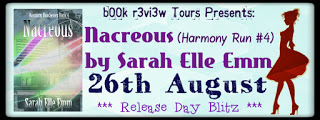Joyce T. Strand's Blog, page 10
October 14, 2015
CHECK IT OUT: Character Unveils Cover
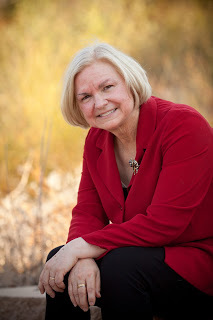 Joyce T. Strand, Author
Joyce T. Strand, AuthorLANDSCAPE FOR MURDERMy protagonist Brynn Bancroft is here today to unveil the cover of her second mystery, LANDSCAPE FOR MURDER, scheduled for release Nov. 5 and available for pre-order.
Brynn Bancroft evolved from the Jillian Hillcrest mysteries where she served as Chief Financial Officer at a small biotech company. For a variety of reasons, including her own divorce, discovery of her affair with the CEO, and her disturbing past, she decided to leave her position and agreed to help manage her ex-husband's winery.
As the protagonist in HILLTOP SUNSET, Brynn begins to shed her past and her behavior of protecting herself by blocking emotions. We watch her transition from a shallow uncaring person to someone who starts to understand the emotions of friendship and love.
At the same time, much like Jillian—who occasionally shows up in the Brynn Bancroft mysteries—Brynn, too, attracts mystery and murders as she grows to enjoy life at her ex-husband’s Hilltop Sunset Winery.
In the following brief interview, she offers some hints about how she becomes involved in LANDSCAPE FOR MURDER.
Q: So tell us about this mystery. When we left you at the end of HILLTOP SUNSET you were seriously considering abandoning your career as Chief Financial Officer and joining your ex-husband to manage a new winery. How did you become involved in another murder?
Brynn Bancroft: Yes, I definitely opted to help Liam develop his winery instead of being a CFO. I find it more enjoyable and fulfilling than discussing the financials of a public company.
And I am particularly excited about this great new killer cabernet we’re launching.
At the same time, I started to paint again. It's quite therapeutic. And that’s how I met a new friend—while painting a landscape together with him. I was waiting for him to join me one day when a police car stopped and told me about his murder and asked me to come to the station to tell them what I knew.
Q: And just what did you know about your murdered artist friend?
Brynn Bancroft:Not much. I was dumbfounded! He was a gentle elderly gentleman who enjoyed painting—and old Hollywood movies. He was not wealthy nor was he offensive. I couldn’t imagine why someone would want to murder him.
I was aware, however, that he was searching for his missing daughter who had disappeared as a teenager some 30 years earlier.
Q: What about your ex-husband, Liam? How are you two getting along now?
Brynn Bancroft:Well, I’m not sure what’s happening between Liam and me. He is still working at his job and only visits the winery occasionally, so I manage it myself along with our winemaker. But, I admit, I always look forward to Liam’s visits. I feel, well, safer and more at ease when he’s around. But I just don’t know what’s going to happen with us. He seems to think of me as his business partner only. Which I guess is OK. Maybe. But sometimes, I yearn for more.
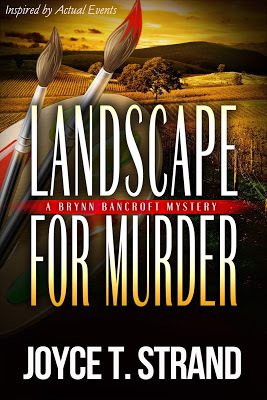
About LANDSCAPE FOR MURDER: A BRYNN BANCROFT MYSTERY (2)
A friend’s murder. An unconnected cast of suspects, including the victim’s missing adult daughter. As if that wasn’t enough, Brynn Bancroft’s winery has been broken into. Can she deal with her co-owner ex and help the police find her friend’s murder so she can finally overcome her own troubled past and enjoy family life with her teenage ward?
Available for pre-orders now. For release on November 5, 2015.
Excerpt: Chapter 1
The sheriff’s patrol car annoyed Brynn Bancroft when it stopped in the narrow curve of the road next to her, and its driver put down his window. She had traveled more than an hour to her favorite meadow where she could sit at her easel and paint in solitude without interruption. She had just gotten started. She regretted not having walked further into the muddy field. The uniformed driver, whose sandy hair was cut close, removed his dark glasses and said, “Hello. I’m Deputy Hallis from the Marin County Sheriff’s Office. Sorry to hear about your friend.” Brynn turned to face him, confused. She didn’t know him, nor had anything recently happened to any of her friends, as far as she knew. He must have detected bewilderment on her face. He said, “Your artist friend. Haven’t I seen the two of you here painting when I’ve driven by on my way to town?” Although perplexed by the interruption, Brynn understood that the intruder was referring to a fellow local artist she had befriended on former painting trips to the area. The two of them had sat together in this same spot. Brynn said, “Why, yes, if you mean Kenneth Sterling. We often painted together. Is there a problem?” “Yes, ma’am. Can you tell me your name, please? And where you are from?” Brynn’s concern for her friend overcame her annoyance, and she answered, “My name is Brynn Bancroft. My ex-husband and I own the Hilltop Sunset Winery in Sonoma.” “I see. And you came over here to paint with Mr. Sterling?” “Yes. What is this about?” The deputy hesitated briefly and then said, “I’m afraid your friend is dead.”
About Joyce T. Strand, Author
Joyce T. Strand writes who-done-it mysteries that typically involve a murder or two, often a touch of romance, and always a few red herrings.
LANDSCAPE FOR MURDER is the second of a trio featuring Brynn Bancroft, a corporate executive transitioning to winemaker, preceded by HILLTOP SUNSET, the first Brynn Bancroft Mystery. Bancroft played a minor character in Strand’s novels On Message, Open Meetings, and Fair Disclosure—three mysteries solved by Jillian Hillcrest, a publicist whose boss was Chief Financial Officer Brynn Bancroft.
In addition to the current-day mysteries, Strand published THE JUDGE'S STORY in June 2015 a historical mystery set in a small California town (Ventura) in 1939 that features a California Superior Court Judge.
Although fiction, the Jillian Hillcrest and Brynn Bancroft mysteries are inspired by real California cases. She based the protagonist in THE JUDGE'S STORY, also fiction, on the memoir of a California Superior Court Judge (1941).
Much like her protagonist, Jillian Hillcrest, Strand headed corporate communications at several biotech and high-tech companies in California’s Silicon Valley for more than 25 years. Today, in addition to creating mysteries, Strand writes and publishes a blog, Strand’s Simply Tips, is a writer for a regional wine magazine, and is working on the third Brynn Bancroft mystery, to be published in November 2016.
Strand lives with her two cats and collection of cow statuary in Southern California, and seeks out and attends as many Broadway musicals and other stage plays as she can.
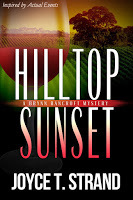 About HILLTOP SUNSET: A Brynn Bancroft Mystery (1)
About HILLTOP SUNSET: A Brynn Bancroft Mystery (1)A mystery set in wine country pitting financial exec Brynn Bancroft against a determined stalker, a troubled love interest, and a haunting past.
Links
Purchase Links
Pre-order LANDSCAPE FOR MURDER
Amazon for Kindle
HILLTOP SUNSET
Amazon (book and e-book)
Barnes and Noble (e-book only)
All booksAmazon http://amzn.to/1CCniCHBarnes and Noble http://bit.ly/1I0rZIL
Author Links:Author PageAmazon Web page Facebook Goodreads Twitter: @joycetstrand
Published on October 14, 2015 18:21
October 6, 2015
WHAT THE EXPERTS SAY: Ellie Midwood, Author
 Ellie Midwood, Author
Ellie Midwood, AuthorTHE GIRL FROM BERLINEllie Midwood created her unique novel set in Nazi Germany, THE GIRL FROM BERLIN, to tell an entertaining story and also to depict everyday life during this period and what it took to survive. She thoroughly researched the events and personal lives of the people in Nazi Germany to tell "a story of an SS Officer, his Jewish wife, and their fight against the Reich." She assures us that she lightens her story with humor, because her characters do like to laugh, even in the worst circumstances.
Midwood, born in Russia, currently lives in Brooklyn and has written several novels about New York, a city she loves. She is working on the third book of THE GIRL FROM BERLIN trilogy, among others. She is a “dedicated yoga practitioner” an avid reader, and a student of languages.
Don't miss the excerpt from her book following the interview.
Q: You’ve written several other novels, all of which take place in modern-day New York. What inspired you to start the series THE GIRL FROM BERLIN set in 1930s-40s Germany?
Ellie Midwood: It all started nine months ago when I was watching a documentary on the liberation of Auschwitz (I’m Jewish myself so matters like these have always been of great importance for me), and the book actually was first supposed to be strictly about the Holocaust and concentration camps. But as I started doing my research I realized that so many memoirs and biographies have already been written by the people who were actually there, and I would never write with the same feeling and sincerity as those survivors already did.
However, the subject was getting more and more interesting to me, I started reading more books (mostly non-fiction) on the topic, watched probably every documentary imaginable, and even found files from the CIA which became available for public only after the 80’s or 90’s I believe, about the counterintelligence activities and Nuremberg trials as well. And the Holocaust story became a historical fiction, partially a spy thriller, partially a love story.
Q: Is the girl in THE GIRL FROM BERLIN based on a real person, or did you create her in order to tell your story? Did you envision the plot and then decide on the character?
Ellie Midwood: It’s a great question, because a lot of people are asking me how it was possible that an Aryan SS officer falls in love with a Jewish girl in the book, because there weren’t many cases like that in Nazi Germany. However the ones that happened became my other inspirational source, just like the story of a young Jewish girl Ilse Stein who fell in love with and got saved – together with her family – by the Nazi captain Willi Schultz, who was in charge of the Minsk ghetto (documentary is called ‘The Jewess and the Captain’). There’s also another memoir written by a Holocaust survivor called ‘The Nazi Officer’s Wife,’ so I would say that my main character Annalise is a collective image of those real Jewish women, even though she’s entirely fictional.
Q: How do you engage readers in today’s world to care about characters in the first half of the 20th century?
Ellie Midwood: Many people still have that fascination with World War II and Nazi Germany history in particular because it touched so many lives in one way or another. I would say that many of us today have at least one person, dead or still alive who remembers the events of that time or participated in them, so it certainly is an interesting subject for a lot of readers nowadays.
What’s really important is the eternal topics which arise as the story develops: that love does conquer all and erases all the differences even in such horrifying circumstances, that you have to stand up to evil even though sometimes you’d be alone against millions, that you have to follow your heart and do what you feel is right, and not blindly obey your leaders… I tried to embrace it all in my book to make the readers think about their lives and their choices in the 21stcentury.
Q: It’s easy to assume that there is a hero-versus-villain approach in a book set in Nazi Germany with a Jewish protagonist. However, are there different levels of heroes and villains? Are some villains more villainy? And are some characters neither?
Ellie Midwood: The readers would be very surprised to learn that there are not purely positive or purely negative main characters in THE GIRL FROM BERLIN, and that’s exactly how I planned it to be. I didn’t want to make it another good guy – bad guy story, if you know what I mean, where all the Nazis are bad and all their victims are good. I wanted to show them real people, who make mistakes, who make wrong decisions, who are forced to do certain things sometimes to survive, to save their own lives and people dear to them, but in the end they are very honest to themselves and still try to do the right thing.
For example my protagonist Annalise, who is supposed to be a very positive character, starts working in the Reich Main Security Office in order to help the counterintelligence, but still harms her own people by fulfilling her duties of an SS-Helferin. She has to lie a lot, she starts an affair with another man, and that’s definitely not what you expect from a positive character.
Her husband Heinrich, who is now one of the key agents for the allied intelligence, back in the day executed hundreds of Jews following the orders of his commander. He shot his first wife to save himself from being compromised. That’s definitely not something a good character would do.
But if I made them too good, they wouldn’t be real. They wouldn’t last a day in Nazi Germany if they would start an open fight against the regime, and I wanted to make it clear in the book. They’re ordinary people who wanted to help the people but who also wanted to survive.
As for the villains, and that’s another interesting point, some of them turn out to be not as evil as they seemed in the beginning. There are very brutal, hateful Nazi characters in the book, but they play minor roles. The main ‘villain’ – the leader of the Austrian SS Gruppenfuhrer Dr. Ernst Kaltenbrunner turns out to have his own story, and his character changes greatly throughout the whole story. We only see the first glimpse of it in Book One, and later the readers will be able to see the full transformation unravel. He’s actually my favorite character in the book, very complex and unpredictable, good and bad at the most unexpected moments. He wasn’t supposed to be in the story at all at first, but I came across his biography and after doing more research, I just knew I had to make him one of the main characters. He was a very controversial man, but had a very interesting personality.
Q: You were reared in Russia. Do you think your perspective about Nazi Germany is different than those from other countries? Did that perspective influence your story?
Ellie Midwood: I was raised in Russia, but the funny fact is that I don’t really consider myself Russian. My family is all Jewish, and it’s a very different ethnic group from the Slavic Russian people, and that was the reason why I moved to the United States; it was very hard for me to fit into their society just because the mentality is very different. So speaking of the Russian influence, especially Russian government influence, which has a very strong opinion on the WWII, there was very little of it, if any.
Something else influenced my writing though. Many members of my family fought in that war, my great grandfather came back with minor injuries, like my three great uncles; my grandmother’s uncle never came back and nothing is known of his fate. And my grandfather, who was only seventeen at that time, was lucky enough not only to survive but to go all the way to Berlin where he served later for several years in the Soviet occupation zone. That’s where he learned German, which he started to teach me later, and learned about German culture and traditions.
It’s very interesting that he, a soldier who fought in the front and saw people die every day, didn’t seem to have any hard feelings for the German army soldiers. He was telling me many stories that sometimes they, the Russians and the Germans, would announce a quick ‘non-offensive’ to exchange vodka for cigarettes and other interesting things like that. He explained to me that they weren’t bad people, they were just following their orders like all soldiers have to. I tried to make exactly this point in my book, that not all of them were bad. I’m not talking of the hardcore Nazis here of course, especially the ones belonging to the Einsatzgruppen, or responsible for the Holocaust in the other way, it’s a completely different question. Their atrocities are undeniable, and there’s no doubt about that.
Q: What kind of research did you do for historical accuracy and back-story? What were some of the more interesting pieces of information you uncovered?
Ellie Midwood: I probably read everything written on the topic: ‘The Gestapo: The History of the Horror,’ ‘Nuremberg Diaries,’ ‘Nuremberg Trials,’ other historical non-fiction books, many recovered and now available for public documents from the CIA archives, watched every documentary possible, read many biographies and memoirs… I actually started to joke that I live in 1930-40s now while writing this trilogy, I don’t watch and don’t read anything unrelated to the topic, it’s very funny, but I’m a perfectionist that way, if I get into something I have to really study it to make myself impartial as the author.
It is naturally assumed, especially concerning the war criminals, that they were evil, horrible people. And after a thorough study I came to the conclusion that there’s a lot more to their stories. If they were really bad, brutal Nazis and it was confirmed by multiple sources, I transferred them into my book as they were. But if some characters, I’m talking about real political figures of that time of course, were different and acted not out of blind hatred but because of some other reasons, I tried to show it as it was.
All the historical events in the book, together with main Nazi leaders, are all real and based on what truly happened, described by both history books (I used different sources, not only American, but Jewish, British, French, German and Russian as well, to get an objective point of view on the matter because every country has its own opinion of the events of that time) and witnesses’ statements. So the book is very accurate from a historical point of view.
Q: Were you able to use humor to develop your characters or tell your story?
Ellie Midwood: Oh yes. One of my beta-readers actually pointed it out as one of the great features of the story, that it’s not too dark and bloody but has a light side to it. My characters are very real people and like real people they joke, they try to keep up the mood even in the scariest situations. My main ‘villain’ Dr. Kaltenbrunner is especially interesting in that sense, he’s very sarcastic and feisty even with his superiors, and my readers told me that they loved his character just for that. There is another great character who the readers will meet in Book Two, Otto Skorzeny, who is another firecracker, they’re both Austrians and some of their dialogues are absolutely hysterical. That’s how they were in real life according to the sources, and I couldn’t help but put that in the book. Sometimes their witty dialogues lighten a very serious mood, and it’s really fascinating that they sometimes joke about very dangerous things as if it’s nothing. It shows their character.
Q: Did you write THE GIRL FROM BERLIN series strictly to entertain readers, or did you also intend to educate and/or remind us?
Ellie Midwood: It’s definitely not for entertainment only, it’s a very touching story in every aspect, and it has a lot of very important themes which are timeless and of which people are needed to be reminded. No wonder that after every Holocaust remembrance post people put a hashtag ‘Never Again.’ Unfortunately today we still have very real cases of genocide but many people prefer to close their eyes to it since it doesn’t concern them directly. That’s what happened in 1930s when Hitler came to power and nobody seemed to care about the anti-Semitic propaganda he started spreading. It’s very heartbreaking for me to hear now that people blame the Israeli people in adopting ‘Nazi’ policies in order to pursue their own ‘sinister’ goals. It’s the most ignorant point of view someone can possible express, and is very insulting for me as a Jewish person. People need to be reminded every single day of the things that happened during the WWII in order for those atrocities to never happen again. And that’s another reason why I wrote this book.
Q: What’s next?
Ellie Midwood: I’m currently working on the third book of the trilogy ‘The Girl from Berlin,’ and after that I’m planning to write a book which will also be a part of the series, but at the same time will be separate from it. It’s going to be a sort of fictional memoirs of my main ‘villain,’ and he has a very interesting story to tell. I’m very excited and at the same time a little intimidated to start working on it since it’ll be the first book written from a man’s perspective by me, and I will have to really get into my character’s head to understand his motives and actions.
Q: Tell us about Ellie Midwood. What do you like to do when you’re not writing?
Ellie Midwood: I’m a very dedicated yoga practitioner and an avid reader. So when I’m not writing I love my yoga classes and a good book. I also love studying a lot, especially history and languages, so recently I decided to remember all the German my grandfather taught me and really learn it this time. The subject I’m currently writing on was certainly a big motivation since I came across many words and notions that I left untranslated for the book to sound more authentic. Next language in queue is Hebrew, as I think I’ve gotten more religious and started to respect my history even more after doing so many researches for my book.
About Ellie Midwood
Ellie Midwood is a New York based author who loves writing about her city and its people. She's a health obsessed yoga enthusiast, a neat freak, an adventurer, Nazi Germany history expert, polyglot, philosopher, a proud Jew and a doggie mama.
Ellie lives in Brooklyn with her Sicilian fiancé and their Chihuahua named Shark Bait.
About THE GIRL FROM BERLIN
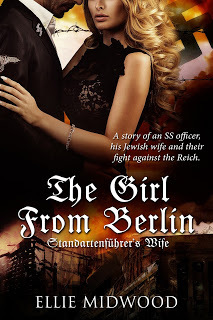 This is a diary of Annalise Meissner, a young German Jew with long time ago falsified papers, living a carefree life in pre-war Berlin. A talented ballerina, she comes from a wealthy family and at first doesn’t want to concern herself with the changes her country starts undergoing under the new Nazi regime. However, when the oppressions against the Jewish population begin, she realizes that she can’t be a silent bystander and swears to help her people in any way possible.
This is a diary of Annalise Meissner, a young German Jew with long time ago falsified papers, living a carefree life in pre-war Berlin. A talented ballerina, she comes from a wealthy family and at first doesn’t want to concern herself with the changes her country starts undergoing under the new Nazi regime. However, when the oppressions against the Jewish population begin, she realizes that she can’t be a silent bystander and swears to help her people in any way possible. She falls in love and gets married to her father's longtime friend, Standartenführer Heinrich Friedmann, who even though he works for SD – the Reich Secret Service – seems to share her views, and soon Annalise learns why. Her new husband turns out to be a counterintelligence agent working for the US government, and together they start a dangerous game against the sinister Gestapo, trying to save as many lives as they can and not to compromise themselves.
But it's not only the persecuted people Annalise wants to save; she meets the leader of the Austrian SS Gruppenführer Ernst Kaltenbrunner who everyone seems to fear, but for some reason Annalise isn't intimidated by the Chief of the Austrian Gestapo and doesn't believe the rumors about his brutality. Gruppenführer Kaltenbrunner isn't hiding the fact that he would love to get this beautiful girl as his mistress, but Annalise, despite the mutual attraction, stays faithful to her beloved husband. However, the risky game she’s playing will soon change everything…
Excerpt
“Ilsa! How did you allow this to happen?!” “Hello, grandma.” “Don’t you ‘hello grandma’ me, fraulein! Are you out of your mind to marry that man?!” Even though she was born and raised in Germany, Grandma Hilda was still very Jewish. Unlike my mom, who was already very ‘Germanized,’ Grandma still spoke three languages: German, Polish and Hebrew (the last two only with Grandpa when he was still alive and very rarely with my mom, who didn’t understand any of it anyway). Needless to say that with everything anti-Semitic going on, she hated everything connected to the Nazi party out of some former national pride I guess, which she clearly refused to give up. “Mother, what can I do?” My mom tightly hugged Grandma and kissed her on both cheeks. “She’s in love, she wants to get married.” “But why to a Nazi?!” “Grandma, Heinrich is very nice. He’s not like the other Nazis.” “No such thing as a good Nazi!” Once that woman made up her mind on something, no arguments normally worked to persuade her in the opposite, so I just shrugged and turned to the mirror to put on my earrings. “All of them are evil and merciless killers, that’s what they are! They think they’re better than everybody else! The descendants of Gods! And whoever is not ‘purebred’ enough needs to be get rid of in order not to ‘pollute’ the genes of the ‘superior’ race! Just look what they did to those poor people during Kristallnacht! And now my only granddaughter is marrying one of them!” “Heinrich wasn’t even in Germany during Kristallnacht, Grandma. He didn’t kill anybody.” “Well, it’s true, Frau Brauer.” My father finally came to my rescue. “Heinrich is more of a… an office worker. He works for Intelligence. He just collects information, he doesn’t actually walk around and kill people.” “Collects information about who, Richart?” Under Grandma’s stern look my father didn’t seem happy he got involved into the whole conversation. “The ‘unfits.’ The undesirable for the Third Reich people, which includes Jews, communists, and everybody else who doesn’t support them. Maybe he doesn’t hold a gun himself but the result is the same. Those people are dead. Or in camps.” She turned to me. “But I guess that fact doesn’t concern you, does it? You betrayed your roots!” “I didn’t betray my roots, grandma! I can’t marry a man who I love because he’s German? What, are you discriminating against Germans now?” “They discriminate against us, and I can’t discriminate against them? Since your great-grandfather was forced to come to this country every single member of our family would only marry Jewish people. They were hiding their origin just like us, but that didn’t matter. We knew who we are and we honored it. And now you want to marry a Nazi! Do you even realize that your kids are going to be Nazis?” “Nazi is not a nationality or religion, Grandma.” “It is both a nationality and religion now, girl!”
Links
Amazon Goodreads Author PageGoodreads Page for GIRL FROM BERLIN Twitter: @EllieMidwood
Published on October 06, 2015 20:16
October 5, 2015
WHAT THE EXPERTS SAY: Matthew Kadish, Author
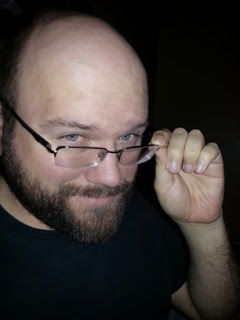 Matthew Kadish, Author
Matthew Kadish, AuthorEARTHMAN JACK VS THE SECRET ARMYMatthew Kadish’s hero, Earthman Jack, continues a “rollicking good time” in the second book of this “space adventure” in EARTHMAN JACK VS THE SECRET ARMY touted by reviewers as “one of the best young adult science fiction series.” Kadish, who set out to “create an epic setting,” integrates humor, entertaining characters, heroes “who do the right thing” with villains who make it difficult for them, and respect for the readers’ intelligence. He believes that a writer of fiction is obligated to be entertaining first and that messages should be “shown” not “delivered.” And although he writes his books for the youth reader, he takes the “Pixar” approach—adults will enjoy them as well, just like Pixar animated movies.
Kadish has a lineup of “lots of stuff” he’s writing, including the third book in the Earthman Jack series, and mysteries, romances, and SciFi stories. He currently lives in Las Vegas and likes to go for walks on the beach (in Las Vegas???), and watch videos of puppies on YouTube.
Don't miss the excerpt following his interview.
Q: Why did you decide to write EARTHMAN JACK VS. THE SECRET ARMY, a book reviewers tout as the “perfect pop SciFi adventure”? Are you a SciFi fan?
Matthew Kadish: Judging from the dating life I had in high school, I can definitively say that yes, I am indeed a SciFi fan. I decided to write EARTHMAN JACK VS. THE SECRET ARMY because there was still a lot more story left to tell from the first book, EARTHMAN JACK VS. THE GHOST PLANET. That, and all the death threats I got from readers if I didn’t continue the series. Ha ha.
Q: When building your “imaginative and exciting universe” for a space adventure, did you create the world first and then the characters? Or vice versa? How do you envision a whole new universe? Are there rules or guidelines?
Matthew Kadish: With me, it always starts with characters. I come up with characters I find entertaining, and then I try to figure out their backstories, and the world-building stems from that. Sometimes you take a macro-perspective to the world building, where you create the environment/setting first and then pull characters and situations from that, but mostly it stems from the individual characters and what would be fun scenarios to put them in.
I knew I wanted to create an epic setting for this story, and it’s a difficult task because it’s not a “fantasy land” confined to a single continent on one planet where you can place limits on what you’re creating. With my universe, I’m creating multiple instances of entire planets, with many races on each planet, complete with long histories, each with their own culture, technology, etc. It can get a bit overwhelming at times. I’m always sure to keep an encyclopedia of the world I’m creating handy, which I’ll add to and edit as necessary, just so I can keep track of everything and keep it all straight.
As far as I know, there are no rules to this sort of thing. I kinda wish there were. It would make my job much easier!
Q: Your protagonist is described as a hero. What are the characteristics of a hero? And what makes an effective villain?
Matthew Kadish: I really like heroes who want to do the right thing, but always have to work really, really, really hard to do that. To me, a good hero is someone that nothing comes easy for, and they fight tooth and nail to achieve what it is they want, despite the odds being stacked against them. Whether that entails getting a date with a pretty girl or saving an entire planet from an army of aliens, it doesn’t matter. As long as they are willing to kill themselves to overcome any obstacle and achieve what it is they want, that’s what makes them worth following. I always dislike it when things come easy for heroes, so I try and make life for mine as difficult as possible.
And part of that is having a good villain. I think effective villains are the ones that are smarter and more capable than the hero, so that they are able to create obstacles to the hero’s goals in a way that actually makes it extremely hard for the hero to persevere. Not all villains have to be evil, they just have to have goals counter to that of the hero and be willing to work really hard to achieve their goals at the expense of the protagonist.
I always like to say that the measure of a hero is judged based off how good the villain he faces is. The better the villain, the better the hero must be to defeat him. So both aspects are important in crafting a good story.
Q: Your book has been described as “one of best YA science fiction series.” Did you target young adults? Or will “old” adults also enjoy the series, ala Harry Potter?
Matthew Kadish: Yeah, I kinda take a “Pixar” position on YA literature, and by that I mean that even though the story is geared toward a younger audience, adults can also enjoy it, because the story is ageless. That’s something Pixar does really well with its movies. Kids will love them, but adults will also love them, because the stories and themes transcend age.
Harry Potter was definitely an influence on my story in the respect that I wanted to tell a tale that parents and their kids could read and enjoy, and a young reader could grow up reading these books and enjoy them just as much as an adult as they could in their youth. I have no idea if I accomplished that, but the emails I’ve gotten from readers seem to point in that direction.
Q: How do you create credibility in your make-believe worlds? How relevant is back-story? What kind of inconsistency or “blooper” will cause readers to stop reading?
Matthew Kadish: I think credibility for a “made up” world really comes from respecting the intelligence of the people you’re writing for. You need to establish rules and laws for your make-believe universe and stick to them. They can be crazy rules and laws, but as long as you don’t break them for the sake of convenience, the reader will go along with it.
For instance, you can’t establish that your fantasy land is as big as Asia, and then have your hero travel across it on horseback over the course of a day. Unless it’s a super-fast magic horse. Then it’s okay! But barring that, once you’ve established how something works, you have to stick to it. It’s when there are no established rules and laws, and anything goes, that readers will get upset and stop reading, because they feel like they’re being disrespected.
Readers hate it when it seems like the author is making things up as they go, so consistency is also key. Once the writer establishes something, they can’t go back and change it for convenience sake. They have to stick to it. I see this a lot with magic. Most authors will just make it up as they go, and as a reader, I’ll be like “Wait, if they can do something this powerful now, why didn’t they just do it at the beginning and save them all some trouble?” But if the author establishes clear rules as to how magic works, then the author must figure out how magic is properly used in their narrative, and it prevents readers from getting distracted by inconsistencies because the author is forced to tailor the narrative to the rules they have established.
I think backstory is important to the author, because sometimes it’s necessary for authors to know more about their fictional worlds than the readers. It just helps the writer add more detail and realism to their writing. However, that being said, there is a fine-line between establishing backstory and boring the reader. I once read a novel where the writer would point out small details in scenes and then launch into paragraphs of backstory about those details – like when a character sees her mother drinking coffee from a mug, and we flash back to her vacation at Disneyland with her father when she was a child and they bought that mug. This flashback lasts for three excruciating paragraphs. This backstory had nothing to do with the main storyline, they were just asides that were important to the author because she had written out this backstory. But as a reader, it was just boring and distracting, and didn’t need to be there.
I often find myself removing backstory from my novels, because sometimes I put in more than the reader needs to know. Backstory only really needs to be established if it’s important for a character arc or the main narrative. Other than that, it should be used like seasoning while cooking – sprinkled in to give just enough flavor, but not overwhelm. If a writer really feels the full backstory should be made available to the reader, they can put it in an appendix. That’s what those things are for.
Q: Reviewers enjoy the humor with the adventure and describe reading your book as having “a rollicking good time.” How helpful is humor to create your characters and tell your story?
Humor is always important, because if you can make someone laugh, they will be entertained and associate positive feelings toward your work. Humor is also a device which helps to endear characters. One of the big “tricks” to making a character likable is to make him funny. This is why you’ll often see sidekicks or “comic relief” characters become so popular, because audiences enjoy them more than the main characters, who often are relegated to more serious roles.
Humor can also be used as a tool to help carry the reader along through the narrative. A story that is all dour and serious can become tedious to read. But if you sprinkle in moments of humor and levity, there is some relief from the serious nature of the story, and that can compel the reader to continue on. Humor can also highlight the severity of a situation. This is why you see “one liners” in action movies all the time. When something intense happens, adding humor to give the audience a release can really heighten the excitement and enjoyment of the moment.
But at the end of the day, I think it’s important to remember that fiction is a form of entertainment, and entertainment should be fun. So when I’m writing, I try not to take things too seriously and have fun while writing my story, in the hopes that the reader will have just as much fun reading the finished product. If a book becomes boring or hard to read, something is wrong. But if a book is fun, it flies by and readers are surprised when it’s over, because they just couldn’t put it down.
Lots of authors find humor can be hard to write, but I think humor isn’t really about jokes, it’s more about how interesting and unexpected something is. I spend the bulk of my time re-writing a scene by saying “Okay, how can I make this something I haven’t seen before?” And eventually, I’ll come up with something so unexpected, it feels fresh, new, and fun to me, so I’ll put it in. I think readers appreciate that type of thing, because it makes the story more enjoyable when they experience something different from what they are used to or expecting.
Q: Do you believe that science fiction is a superior genre to reach young adults? Why?
I don’t know if I’d call it a superior genre. Reading is such a subjective thing. I remember when I was a kid in school and I used to hate reading because all I’d ever be assigned to read was boring old books written long ago in a style I found hard to read when all I really wanted to read was comic books. I’d devour a graphic novel like The Dark Knight Returns, but struggle to make it through two chapters of A Tale Of Two Cities. I do think it’s easier to tackle controversial themes in science fiction, but I believe every reader has their own taste in fiction, so the best way to reach across those boundaries are to just tell a good story, and tell it in a way that’s accessible to as many readers as possible.
Even people who don’t like science fiction will read it if the story is intriguing, good, and well-written. And anything that captures the imagination and gets readers excited will reach a wider audience. At least, that’s my philosophy.
Q: Did you write EARTHMAN JACK VS THE SECRET ARMY to entertain readers, or did you hide a few messages in the story to help educate them?
It’s mostly to entertain, but yeah, I think stories are better when they can entertain and yet communicate deeper themes and messages without preaching about them. Some authors can be really on-the-nose about what they’re trying to communicate, and that can really turn some readers off. The biggest example of this I can think of is Atlas Shrugged from Ayn Rand. Atlas Shrugged is a great story, and I even agree with Rand’s politics, but at certain points in that novel I was just like “Jeez Louise, lady. I get it! Move on already!”
Unless you’re writing a textbook, I think authors have a responsibility to entertain readers first, and educate them second, so the educational aspect should never overwhelm the entertainment aspect. And that’s not to take anything away from educating readers, because people tend to learn better when they are indeed entertained!
My Earthman Jack books are meant to be science fiction fantasy adventures, but I also address a ton of serious topics in them. I talk about quantum physics, about fate and destiny, about the importance of being self-reliant, about spirituality and the nature of the universe, about relationships between men and women, about life lessons for those who are still coming of age, and a bevy of other things. But I try to do them in a subtle way that never distracts from the main narrative. I don’t stop in the middle of a scene and say “drugs are bad, m’kayyy?” Instead, I’ll write about a character trying a drug and show the negative effects that drug has on him, and then explore his thoughts about having done the drug. That’s what’s called “showing, not telling.”
I also think the best books are the ones that leave room for readers to assign their own interpretations to the themes being explored. A writer can certainly say “my book is about X, Y, and Z.” But the books people never get tired of are the ones where the author says instead: “What do you think my book is about?”
This is important because as an author, I understand that once my book is published, it’s no longer mine anymore. It belongs to the readers. And if it is to have a life of its own, that book must be able to withstand scrutiny and offer up multiple options for readers to explore within it. As an author, I want my books to foster debate and discussion, and have different people see different things within it. To me, that’s the mark of great literature – when a story becomes something unique and special to every individual who reads it.
Q: What’s next?
On the writing front? Lots of stuff. I’ve got a laundry list of stories I’m working on right now. Got a couple of mystery novels in the queue, a couple romance stories, and a ton of sci-fi stuff I want to get cracking on. I’m working on the outlines right now, because for me, once an outline is finished the writing goes pretty quickly. So the more outlines I can complete, the faster I can get a book out.
My next big project will be the third book for the Earthman Jack series. The second book just came out and I’m already getting emails from fans saying “When can I read book 3?” And I’m like “Give me a break! I literally just released the second book!” Ha ha ha.
I’ve also got a graphic novel in the works, and I’m interested in doing some video stuff as well. My roots are in filmmaking and technology has now made it so easy to make videos and get them seen by other people, that I’d like to delve back into that arena. I also have plans to make audio versions of my books, so that’s on my table as well.
In short: Tons of stuff!
Q: Tell us about Matthew Kadish. What do you like to do when you’re not writing?
When I’m not writing, I like to go for long walks on the beach, watch videos of cute puppies on Youtube, and go on adventures which usually involve saving the President of the United States. If anyone would like to know more about my writing, they can check out my website, and get a free copy of my book Earthman Jack vs. The Ghost Planet at www.EarthmanJack.com.
About Matthew Kadish
Matthew Kadish is an independent author and world-recognized evil genius. When he isn't writing or being evil, he enjoys relaxing at the beach and videos of puppies. Much like Scottish cuisine, most of his literary works have been based on dares. He currently lives in Las Vegas and always bets on black, because Westley Snipes has yet to steer him wrong in life. He is the most talented author ever. His mother tells him so every day.
About EARTHMAN JACK VS. THE SECRET ARMY
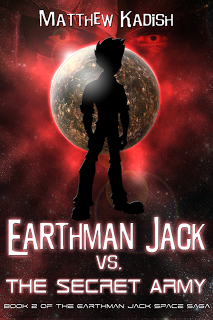 After his heroic battle against the Deathlords on the Ghost Planet, Jack Finnegan is looking forward to arriving at Omnicron Prime, the capitol planet of the Galactic Regalus Empire - the largest and most advanced civilization in the universe.
After his heroic battle against the Deathlords on the Ghost Planet, Jack Finnegan is looking forward to arriving at Omnicron Prime, the capitol planet of the Galactic Regalus Empire - the largest and most advanced civilization in the universe.Things are looking bright for Jack. He has his unconventional group of friends, his mystical spaceship, and the girl of his dreams - Princess Anna. Not to mention a secret mission that could save Earth and everyone he cares about.
But things get complicated when he arrives at Omnicron. Not only is Jack uncomfortable being thrust into the spotlight for his courageous actions to save the universe, but he soon finds life in the Empire isn't everything he'd dreamed it would be.
His friends abandon him to pursue their own interests. Greedy and cunning politicians conspire to steal his spaceship. Even his relationship with Anna is strained now that she's gone from being "the girl next door" to the most powerful woman in the universe.But beneath all that lies a new and terrifying threat from the Deathlords. A threat that grows in secret, slowly spreading throughout the Regalus Empire like a plague, and it threatens to destroy from within the only thing powerful enough to stop the Deathlords and their malicious rampage throughout the galaxy - the Empire itself.
Worst of all - Jack is the only one who knows about this new threat, and no one will believe his warnings.
Suddenly, the Empire is no longer safe for Jack and his friends. Even the people they've come to rely on the most can no longer be trusted. As those he's sworn to protect turn against him, how can Jack hope to save the day?
Fighting the Deathlords was one thing. Fighting the "good guys" is quite another. Will Jack be able to find the strength to be the hero the universe needs?
Or will he finally be defeated by this Secret Army?
Excerpt: From The Introduction
Jack is now travelling to the heart of the Galactic Regalus Empire – the largest and most powerful Empire in the known universe. And this alien boy from a small town on a distant planet is in for quite the culture shock. As most children learn in their remedial history classes, at the time of Jack’s adventure, the Regalus Empire is a little over 10,000 years old and consists of roughly 100 member planets, 300 colonies, and 500 outposts and space stations, spanning close to 30,000 light-years of galactic territory. Member worlds differ in population size, ranging from a few million to roughly ten billion citizens. And, of course, the citizenry is made up of a multitude of different species and races, creating quite the melting pot of alien culture, all of which are represented on the gang’s destination – the capitol planet of Omnicron Prime.And though one would think Jack would be safe now that he’s entering into Princess Glorianna’s realm, nothing could be further from the truth. For new threats are lurking, just waiting to strike, and some of the threats cannot be fought as easily as a Deathlord Dark Soldier. (And let’s face it, those aren’t the easiest adversaries to begin with.)Jack will now have to deal with one of the most frustrating and insurmountable villains in the universe: bureaucrats. Our hero will suddenly be thrust into the viper’s nest of intergalactic politics, where power-players aggressively maneuver to take control of the Ancient Earthship and the secrets it contains – with or without him.As Jack struggles to come to terms with the reality of his new life in the Empire, an even more terrifying threat lurks in the shadows – one whose goal is to destroy the Empire from within, and to wipe out any organized resistance to the Deathlords as they continue their quest to eradicate all life in the universe. It is a threat that has wormed its way into the very halls of power, making it impossible to tell friend from foe, and leaving Jack with no one he can trust to help him fight it – not even those closest to him.After all, how does one defeat an enemy he cannot see? Who can one depend on when there’s no one left to trust? And how can Jack hope to save the day when everyone he’s trying to save turns against him?This will be Earthman Jack’s greatest challenge yet and it will set the stage for the epic adversity he will eventually face. Our tale begins on the Ancient Earthship as it is travelling at 99% the speed of light, headed right for the capitol planet of Omnicron Prime, one month after the events of the Ghost Planet. This is the story of Jack’s first steps toward being the greatest hero the universe has ever known. This is the story of the corruption that nearly brings the most powerful Empire in history to its knees.This, is the story of the Secret Army.Links
Amazon: EARTHMAN JACK VS. THE SECRET ARMY Amazon: EARTHMAN JACK VS THE GHOST PLANET Amazon Author Page
Website SeriesWebsite Twitter: @MatthewKadishFacebook Goodreads Google+ Instagram
Published on October 05, 2015 19:44
September 30, 2015
WHAT THE EXPERTS SAY: Sylvia Stein, Author
 Sylvia Stein, Author
Sylvia Stein, AuthorCHASING CLARITYSylvia Stein will soon release (Oct. 5) her young adult drama romance book, CHASING CLARITY, a story to guide healing for those who have lost a loved one. This is Stein’s second book, and she admits that she does want her books to “carry a message.” Although a romance, Stein adds that the subject of loss makes it more “dramatic” than “romantic.”
When she is not writing, Stein likes to spend time with her husband and three children. She plans to publish a prequel to her first book CLOSURE, and in her spare time she enjoys writing song lyrics.
Q: Would you place your new Young Adult book, CHASING CLARITY, in the “romance” and “drama” genres? Why? Do you consider it a “modern” romance? If so, how does it differ from traditional romances?
Sylvia Stein: I would say my YA CHASING CLARITY is a drama and romance. It has a bit of both. The story is a drama because it deals with a young woman who is dealing with the loss of her love. Then later you see her trying to rebuild her life and try to move forward. I think this is modern romance because it deals with a young woman who has graduated high school, and it has been a year since she lost her beloved Leo who was everything to her. She is dealing with the loss and Mia is also a dancer who had to defer from entering into The New York Dance Academy and then decides to take a leap to start over. I believe it is not a traditional romance and is more dramatic because of the subject of loss.
Q: CHASING CLARITY is your second book that describes how to heal from “hurting.” Your first one, CLOSURE, deals with overcoming the results of abuse. Is “healing” a key theme that you like to discuss? Why?
Sylvia Stein: Yes, healing is a big theme for me in both books although different. I always want to tackle these subjects because I want to bring books that carry a message.
Q: In CHASING CLARITY, your protagonist is a dancer. Do you have experience with dancing? Why did you choose this profession for your protagonist?
Sylvia Stein: Yes, Mia is a dancer. No, I am not a professional dancer but I have always loved dancing, and one of my favorite things is to watch the ballet and contemporary dancing. I also researched dancing when I worked on CHASING CLARITY to make sure I brought the character of Mia and The New York Dance Academy of Performing Arts believable.
Q: Did you write CHASING CLARITY purely for entertainment, or did you hope to guide young adults or deliver some key messages?
Sylvia Stein: I wrote Chasing Clarity to deliver the message of hope and renewal when a loss comes. I wanted to show how Mia overcomes the tragedy of loss and how she moves forward. It is about moving forward and taking a leap on life.
Q: How do you engage readers to want to follow what happens to Mia, your protagonist? What do you consider to be key attributes of an engaging protagonist?
Sylvia Stein: Well, this is my first YA, and I thought I would engage them by keeping the story in First person so they could connect her feelings and the journey she goes through. I think the key attributes of an engaging protagonist is to be able to take the reader and have them follow the character’s journey. Then they can feel all the ups and downs as they are going through it.
Q: What are the attributes of a “romantic” relationship? How do you develop the relevant relationship in CHASING CLARITY?
Sylvia Stein: For me, the attributes of a “romantic relationship” are being great friends, being able to laugh with one another, and being able to show affection for the one you love. The way I show the relevant relationship in CHASING CLARITY is by having Mia share her love for Leo what happens when he is gone. Then having her move to New York and meeting Henry Watson for the first time and being confused over her feelings for him.
Q: How helpful is humor in developing your characters or plot?
Sylvia Stein: Humor is important in my characters because I always add elements of people I know to make them real to all of my readers.
Q: Does the concept of “hero” versus “villain” apply to your CHASING CLARITY? If so, is Mia your heroine? And who is the villain? Or is the story less about heroes and villains and more about living life?
Sylvia Stein: CHASING CLARITY is less about heroes and villains. It is the story of Mia Gerard and the journey of what she goes through when she loses the love of her life, and she has to learn to pick up the pieces. It is more about learning to live her life again.
Q: What’s next?
Sylvia Stein: Well, right now it is all about CHASING CLARITY. Then next month I begin to work on my prequel to CLOSURE entitled, “ The Diary of a Broken Father” which will be published in December.
Q: Tell us something about Sylvia Stein. What do you like to do when you’re not writing?
Sylvia Stein: When I am not writing I am a mom to three beautiful children and I like to spend time with them and my husband Jeremy. My other passion is writing lyrics to songs that I create in my head. I hope to be able to get them published one day.
About Sylvia Stein
Author Sylvia Stein began her path to writing when she joined the Writer’s Group on Linked In 750 in 2012. She also started to connect with other authors through the World Literary Café. She continued her journey by creating short stories, which were published in the Giant Tales Anthology series. While obtaining her Masters degree at Southern New Hampshire University online author Stein built a solid foundation with her colleagues who encouraged her to continue writing. That’s when CLOSURE was born. With the help of her editor, CLOSURE grew from a short story to a full novella that Author Stein is excited to share as her first debut novel published in July 2014. She released her first YA novella, CHASING CLARITY, on September 30, 2015.
About CHASING CLARITY
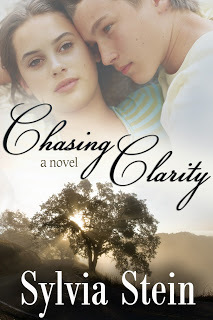 What happens when you lose the person most important to you and are left to pick up the pieces?
What happens when you lose the person most important to you and are left to pick up the pieces?Mia Gerard had always wanted to be a trained dancer yet she has just lost the love of her life in a tragic accident. Leo Dancy was her best friend and soul mate. As she tries to deal with losing him, she finds his absence unbearable and she feels lost without him.
But then a great opportunity arises for Mia that she just can’t turn down. She is accepted into the New York Dance Academy of performing arts. At first she is overwhelmed but once she gets there she begins to allow herself to heal.
This is when she comes across Henry Watson, a painter with aspirations of acquiring his own exhibit one day. While she ponders her feelings for Henry, will she be too late? Or will she find the clarity she needs and chase after him?
LinksFacebook BookTrailer (You-tube) Wixpage (website)
Published on September 30, 2015 19:04
September 29, 2015
WHAT THE EXPERTS SAY: Eleanor Webster, Author
 Eleanor Webster, Author
Eleanor Webster, AuthorNO CONVENTIONAL MISSEleanor Webster enjoys the Regency Period “because it depicts a society poised for change.” Her new Regency Harlequin historical book NO CONVENTIONAL MISS (Oct. 1 release) features a heroine who is an inventor and does not always follow the conventions of the time period. Webster lists humor, character relatability, historical accuracy, and happy endings on the list to creating an engaging Regency story.
When she’s not writing, Webster is busy finishing her doctorate in Psychology. She is also working on her second Harlequin, set in French Revolution times. She lives with her husband and two daughters in northern Canada, enjoys hiking, and is an avid runner.
Check out the excerpt following her interview to learn more about her book.
Q: Why set NO CONVENTIONAL MISS in Regency times? Does the time period offer you an advantage to tell your story?
Eleanor Webster: I have always loved the Regency Period because it depicts a society poised for change. The inventions of the Industrial Revolution are emerging, bringing with them the anticipation of societal transformation.
This serves a practical purpose in the plotline for my Harlequin Historical NO CONVENTIONAL MISS. The protagonist, Rilla, is an inventor. She has a keen interest in force, momentum and any number of ‘unladylike’ activities. She is working on an automated butter churn and has an eager enthusiasm for all things scientific.
It works to have her story set against the backdrop of a society with both a zest for innovation and strict rules for female behavior.
Q: When creating your protagonist, who I assume is NO CONVENTIONAL MISS, what traits did you assign to her to engage readers so that they care what happens to her? What do you consider the most important characteristics of a heroine?
Eleanor Webster: Rilla is complex and somewhat conflicted. She has always been plagued with moments of second sight, an aspect of herself she fears. Indeed, a maternal aunt had been institutionalized for similar traits. I think this vulnerability helps the reader connect.
However, Rilla is no wimp. Rather she has a thirst for knowledge and innovation hoping that by developing the scientific she will subdue that mystic element within her nature.
For me, one needs to feel sufficiently close to a heroine to understand her motivations, fears and strengths.
Q: How relevant is the concept of “villain” to the development of conflict in your story? What makes an effective villain?
Eleanor Webster: There is a ‘villain’ who is manipulative and blackmails Rilla. However, he is minor. The greatest conflicts for both Rilla and Paul are internal. Indeed, the biggest struggles for any individual are those which come from within.
The ‘villain’ serves to bring this conflict to the surface, forcing Rilla and Paul to confront their vulnerabilities. This helps them to grow as people as they gain acceptance for both themselves and each other.
Q: What kind of research did you conduct to assure historical accuracy in NO CONVENTIONAL MISS? How important is time-period accuracy to your readers?
Eleanor Webster: Time-period accuracy is important, in fact, it is absolutely vital. Inaccuracies irritate the reader and undermine an author’s credibility. Having said that, I also recognize that I am not infallible and that there are readers having far greater knowledge than my own. If you find a mistake, please let me know!
I live in Canada so my research is from secondary sources. These are absolutely wonderful but not comparable to original, primary source research. I have a B.A. in history and spent considerable time in British Columbia’s archives. Original newspapers, documents, letters and buildings all serve to deepen one’s knowledge and give one a true, multi-dimensional sense of history. I love European history but have not yet had the opportunity to gain that depth of knowledge. I hope to do so if my writing becomes profitable. Meanwhile, if anyone spots an error – please- let me know at eleanorwebsterauthor.com.
Q: Do you consider NO CONVENTIONAL MISS a “modern” regency romance? If so, how does it differ from traditional regency romances or what makes it “traditional”?
Eleanor Webster: NO CONVENTIONAL MISS is a departure from the traditional Harlequin historical because it involves a paranormal element. In this sense, it has a ‘modern’ flavor. However, the voice is somewhat traditional in that I use witty dialogue which is a hallmark of the typical regency. My hope is to capture gothic drama mixed with that wonderful sense of ‘ton’ made so famous by Georgette Heyer.
Q: Did you write NO CONVENTIONAL MISS to entertain only? Or did you also want to deliver a message or educate your readers?
Eleanor Webster: NO CONVENTIONAL MISS is primarily aimed to entertain. I mean it is a Harlequin Romance! I work in a field of psychology which can result in heart-breaking situations and I write to create a place of romance and ‘happy endings’ which are not always duplicated in real life.
I do not aim to educate (that sounds too much like school) but I do hope to send a positive, feel-good message and to stimulate thought. In NO CONVENTIONAL MISS Rilla cannot accept her psychic abilities and therefore rejects a part of herself. I believe that each of us has some characteristic, be it internal or external, which we do not embrace. I hope that Rilla’s self-discovery and eventual self-acceptance will encourage readers to share a similar journey.
As well, Rilla is, as the title suggests, unconventional. Indeed, she lives in a society which is incredibly rigid in its expectations of its female members. Modern society is considerably less ‘restrictive’ but many of us are still hemmed in by those perennial ‘shoulds’. (I abhor ‘shoulds’ by the way.) I love to draw female characters from any time period who are true to their authentic nature – even if that is building butter churns.
Q: How helpful is the use of humor to develop your characters or tell your story?
Eleanor Webster: I love humor. I love creating a quirky characters who see the world through a different lens. I challenge myself to create wry humor through witty dialogue and I truly, truly hope that this is demonstrated in my writing.
The quirky character in NO CONVENTIONAL MISS is, without doubt, Paul’s stepmother, Lady Wyburn. She is kind and lovely and slightly ditzy in a very smart way. For me, Lady Wyburn is that impish inner voice which notes the inanities of everyday life and enables one to cope with humor to life’s vicissitudes.
Q: What do you consider to be the key components in developing a romantic relationship?
Eleanor Webster: Now that is the question… There needs to be chemistry, an attraction which is definitely physical but is also on an intellectual and emotional level. As well, there must be a problem or challenge which must be overcome. This serves to heighten the tension but it cannot be too contrived. I loathe plots where everyone is being foolish and you just want to bang everyone’s head together and tell them to work things out.
And then there is the growth which occurs by overcoming the challenge, allowing the individuals to move towards that ‘happily every after’
Q: What’s next?
I have a two book contract with Harlequin so a second book will be released at some point... This is set slightly earlier with the backdrop of the French Revolution.
Q: Tell us about Eleanor Webster. What do you like to do when you’re not writing?
Eleanor Webster: I work in a field of psychology and am currently pursuing my doctorate – okay – I’m actually on a leave of absence. I have completed the course work but need to get going on my thesis. I am skilled at procrastination and once even cleaned my oven rather than write an essay. Sadly, this was not a particularly effective procrastination strategy as I didn’t cook at the time.
I also live in a very beautiful area of Canada so I enjoy hiking and I am an avid runner. I recently travelled in Europe – check out my website at eleanorwebsterauthor.com for the exploits of the ‘paddington hat’
About Eleanor Webster
Eleanor Webster loves high-heels and sun, which is ironic as she lives in northern Canada, the land of snowhills and unflattering footwear. Various crafting experiences, including a nasty glue-gun episode,
have proven that her creative soul is best expressed through the written word.
Eleanor lives with her husband and has two daughters. She is a lifelong learner and is currently pursuing a doctoral degree in psychology. Eleanor has a masters degree in educational psychology and an undergraduate degree in history and creative writing. She loves to use her writing to explore her fascination with the past.
About NO CONVENTIONAL MISS
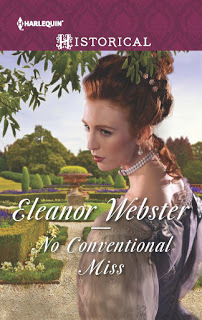 She's always been different…
She's always been different… Amaryllis Gibson is an unlikely debutante. She favors fact over fashion, cares not for "proper" conversation and is haunted by ghostly visions which could land her in the madhouse! Marriage is definitely the last thing on Rilla's mind…
But when she's caught in a compromising position with Viscount Wyburn, suddenly she finds herself betrothed! And worse, his powerful presence only increases her visions. By shedding light on the viscount's past, can Rilla gain his trust and win him round to her more…unconventional traits?
Excerpt
She smelled of soap and lemons, he thought, as he led her to the dance floor. He liked the smell, tangy and fresh, so different from the perfumed scents of other women. ‘My lord?’ ‘I beg your pardon?’ He jerked his attention back to the conversation. ‘Do other women look spellbound as if you’ve said something witty?’ ‘Naturally.’ He took her gloved hand and felt it tremble within his palm. The dance started and they broke apart in time to the music. ‘Even when you haven’t said anything either inspiring or witty?’ she asked as they came together again. ‘Especially then.’ ‘How tiresome for you.’ ‘Why so?’ ‘Well, it must make you feel as though you’re not a real person, but just a viscount.’ He laughed. ‘That’s the first time I’ve been called “just a viscount”.’ ‘I meant no offence.’ ‘I know.’ And it was true, he thought, surprised by her perception. Few people saw him as a person and women never did. He was a good catch, with a title, estate and ample income. ‘Now you’re much too serious,’ she said. ‘Aren’t you supposed to look as though I’ve also said something remarkably entertaining?’ She stepped under his raised arm. ‘Or does it not work both ways?’ ‘It does and can be tedious, I assure you.’ ‘Indeed, I find discussions about the weather highly overrated.’ ‘Try looking fascinated by a spaniel’s earwax,’ he said, remembering a conversation with a certain Miss Twinning. Miss Gibson laughed, a rich spontaneous sound. No, she was no statue. She was too vibrant—more like a flame caught in human form. ‘I take it you do not discuss earwax?’ he asked. ‘I steer clear of that subject. In fact, I say remarkably little and endeavour to stick to Imogene’s list of suitable topics.’ She spoke with mock solemnity, the amusement in her eyes belying her tone. She had remarkable eyes. ‘Which include?’ ‘Fashion and the weather.’ ‘Really.’ They were dancing side by side. He caught another whiff of lemon. ‘And what,’ he murmured, bending so close that her hair tickled his cheek, ‘would you discuss if left to your own devices?’ ‘My waterwheel and butter churn.’ ‘Your what?’ His fashionable ennui deserted him and he almost missed a step, narrowly avoiding the Earl of Pembroke’s solid form. ‘My butter churn,’ she said more slowly. ‘And what makes this churn so worthy of conversation?’ ‘Nothing really. I should not have mentioned it.’ She looked regretful, glancing downward so that her lashes cast lacy shadows against her cheeks. ‘Oh, but you should. I’m fascinated.’ This was, surprisingly, true. He wanted to lean into her and catch again that delightful whiff of lemon. He wanted to see the intelligence sparkle in her eyes and feel her hand tremble belying her external calm. ‘The churn is automated by a waterwheel, you see, and I believe it would save our dairy maid so much hard labour.’ She spoke quickly, her cheeks delightfully flushed with either enthusiasm or embarrassment. ‘And have you had the opportunity to test its efficiency?’ ‘Once,’ she said. ‘Successfully, I trust.’ Her lips twitched and she looked up, merriment twinkling. ‘The water succeeded in flooding the dairy. After that my device was banished.’ ‘Unfortunate.’ 'However, I have constructed a small model so that I can perfect the design during my baths.’ ‘Your baths?’ He choked on the word. His mind conjured a vision of long, wet hair, full breasts and alabaster limbs. He caught his breath. Her cheeks reddened. ‘One of those forbidden subjects like undergarments. I mean—I only mentioned baths because my churn is run by a waterwheel. Hence I need a source of water to move the wheel.’ He laughed. He could not help himself. Her conversational style might be unusual, but it was certainly more edifying than the weather. Or earwax, for that matter.
Links
Purchase LinksAmazon Barnesand Noble
Author SitesWebsiteFacebookGoodreadsTwitter @ewebsterauthor
Published on September 29, 2015 20:58
September 23, 2015
WHAT THE EXPERTS SAY: Sarah Elle Emm, Author
 Sarah Elle Emm, Author
Sarah Elle Emm, AuthorHarmony Run SeriesWith her most recent release of NACREOUS, Sarah Elle Emm completes her young adult dystopian Harmony Run Series. Emm considers the dystopian genre ideal for teenagers, given their turbulent time of life combined with making them think “what if?” She is a world-builder first, although her characters follow soon after. Although she definitely writes for entertainment, her books also parallel the real world and call for “harmony” given that we are all valuable human beings.
When she’s not writing, Emm likes spending time with her daughters and talking to her dog, who she says is a good listener. She is currently plotting her next young adult dystopian series in between spending more time with her family.
Don't miss the giveaway opportunity and excerpt following the interview.
Q: The Harmony Run Series, and its newest release NACREOUS, is dystopian, written for young adults. Why choose this genre for these readers? What do you consider dystopian, that is, what are your readers looking for in this genre?
Sarah Elle Emm: I think a dystopian is sort of an upside down world. It is a story where there have been drastic changes to a “normal” societal structure. Think 1984, Hunger Games, Brave New World, The Giver, or the Divergent Series. Basically, the rules have changed, and typically the characters are dealing with an oppressive sort of situation in a dystopian. The question becomes, will they overcome these dire circumstances?
I think teenagers are going through so much between their hormones and their thoughts about life goals and their feelings that the dystopian genre is perfect for them. Plus, the dystopian genre really makes you ask yourself, “What if?” What if the government collapsed? What if we were forced to live in segregated cities? What if we couldn’t go to school? I think teens can handle that sort of thinking and are into it. I was personally a rather rebellious teen, and I was always questioning authority and trying to express the pent up emotions I felt at the time. I can only imagine how a dystopian novel might have turned out had I tried to write one back then.
Q: How do you do your world building? Do you create characters first and then the world around them?
Sarah Elle Emm: Honestly, I think the world comes first, well at least a general idea about what is wrong with the society I am writing about. I had a dream about the Harmony Run Series and started taking notes immediately, outlining the story, but I think the idea had been brewing in me for years.
After my first trip to Dachau Concentration Camp in Germany back in the early nineties, I felt this immense pull to learning more about the victims of the Holocaust. It never really left me, and I think my desire to write about a future society, where people were treated so horrifically as those in concentration camps, old and present ones, sort of stayed with me.
I wanted to build my fictional world with some parallels to the real world. On the one hand, as sort of a statement…This has happened before, people. And people still discriminate based on our outward and cultural differences today, so I wanted to write a story where the theme was that we are all valuable human beings, regardless of differences.
So the world came to me first, at least in this case. Of course, in that dream I mentioned, I met my main character, Rain Hawkins. So I guess she sort of arrived with the world.
Q: In a dystopian world, how or what do you do to assure credibility? Does credibility matter?
Sarah Elle Emm: I tried to provide background information in snippets throughout the story, so you can see how the events unfolded that led to this unbearable dystopian society. I think providing some history helped for sure. I also tried to make you care about the characters so much, you weren’t really concerned about much else. Still, the fun thing about dystopian is that you can create a new government, a new system, if you will, where the rules have changed. It gives you more freedom as a writer.
Q: How do you create engaging characters? Why do readers care about them?
Sarah Elle Emm: I wanted the reader to be able to relate to the characters. Basically, they were just your average teenagers until their lives were uprooted. Rain was a soccer player. They had normal lives in suburbia. In the series, you see glimpses of who they were before and how they use their past to get through their present. They joke around, fall in love, and challenge their parents’ decisions like other teens. And I think you can’t help but care for them once you get to know them and see what they are going through. You cheer for them. You have to believe they’ll make it through their situation.
Q: Tell us about your villains and heroes. Is conflict between them relevant to your story?
Sarah Elle Emm: My villain in the Harmony Run Series is a female, Elizabeth Nicks, and she was modeled after a few dictators throughout history. Slowly over the series, you learn a little bit more about Elizabeth, which gives readers a chance to decide for themselves if they want to understand how she became who she is today. I don’t make readers accept her or her past. I just wanted them to have the chance to make up their own minds about her.
The Freedom Front is a small group of teenagers, who are the heroes of the story. Elizabeth has a couple of things in common with the heroes, but I don’t want to give that away. As the series unfolds, the conflict between them becomes more and more relevant, but again, I don’t want to give too much away...
Q: How helpful is humor to telling your story or developing your characters?
Sarah Elle Emm: I think humor adds to every story, and I especially wanted to use it in the Harmony Run Series because it is a darker story. I knew the humor would lighten the intensity the reader was feeling. Whenever Rain and her friends are interacting, it isn’t uncommon to see joking around and light-heartedness between them. It’s how they get through the terrible things they are dealing with. I think it makes the characters seem more real. They joke around and tease each other just like other teenagers.
Q: Do you write your novels for entertainment alone or do you hope to deliver a message or two?
Sarah Elle Emm: I write for entertainment and to also deliver a message or at least leave the reader thinking about a few things. My first novel, Marrying Missy, was a women’s fiction, and though it had plenty of light-heartedness woven into the story, some of the issues pertaining to the story were loyalty when it comes to friendships, self-image, prejudice, and even abusive relationships. I guess it sounds sort of heavy if you think about it, but I think that most readers enjoyed it. A few readers said it had a Lifetime Movie sort of feel, which I would agree with.
In the Harmony Run Series, I tried to leave readers on the edge of their seats, desperate to know what would happen to Rain and her friends, but also rooting for Rain and Jabari as they fall in love for the first time. So yes, entertainment was very important in this case as well. Yet, there were many messages in this series also. The two most important ideas I wanted readers to take away was the idea of having hope, even in dark times, and that regardless of our outward differences or the spot on the globe we hail from, we are all human beings, and we should endeavor to live in harmony.
Q: Can you explain the significance of the title NACREOUS and Harmony Run without giving away your plots?
Sarah Elle Emm: Nacreous means exhibiting lustrous or rainbow-like colors, and it is a synonym to the other titles in the Harmony Run Series. Prismatic means brilliantly colored or iridescent. I chose the titles because I wanted them to represent how these teenagers are and how they work together. They come from various ethnic or cultural backgrounds, and they work together, sort of like a rainbow, if you will, to overcome evil with their good. Together, they shine throughout the series. I chose Harmony Run as the series title because 1) they are figuratively running towards harmony, and 2) Rain is a runner as you see in each book, and 3) Rain’s old voice-activated room back in Zionsville was called Harmony, and in a sense, Rain is fighting throughout this series to get home or to a place with freedom.
Q: What’s next?
Sarah Elle Emm: Well, my daughters put a big guilt trip on me this school year. They say I didn’t spend enough time like the other moms volunteering in their classrooms last year. I did, in my defense help out with every field trip and class party for both of them. Anyhow, I am volunteering in their classrooms twice a week in addition to those other things this year…So in between motherhood and their school, I am plotting a new YA dystopian series. I am also working on a suspense novel.
Q: Tell us about Sarah Elle Emm. What do you like to do when you’re not writing?
Sarah Elle Emm: Well, I spend a lot of time with my daughters. I do the household chores, help with homework, drive them to various activities, (piano, martial arts, speech), and I talk to my dog. (She’s a great listener). I go to church and do my bible study everyday. I experiment with my patio garden. I have loads of cucumbers right now, which I’ll eat and also juice. I spend lots of time prepping my healthy meal plans, which is key to dealing with my health issues. (I have SLE Lupus). I have stacks of books I try to make my way through. I love to read. And when my brain is too tired to write late at night or I feel like totally zoning out, I watch Netflix. I just finished half a season of Hart of Dixie. It is such a feel good show. (I also watch the Walking Dead and Game of Thrones).
About Sarah Elle Emm
Sarah Elle Emm is the author of the Harmony Run Series , a young-adult fantasy and dystopian series, released in May 2012 by Winter Goose Publishing. (PRISMATIC, May 2012, OPALESCENT, February 2013, CHATOYANT, September 2014, NACREOUS, August 2015) Her debut fiction novel, MARRYING MISSY, was published by Bird Brain Publishing in October 2011. Sarah is a graduate of The University of Evansville, she has lived and worked in Mexico, Germany, England, the U.S. Virgin Islands, and has traveled extensively beyond. Sarah lives in Naples, Florida with her family. When she’s not walking the plank of her daughters’ imaginary pirate ship or snapping photos of Southwest Florida scenery, she is writing.
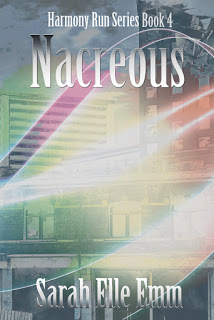 About NACREOUS—Harmony Run Series Book 4
About NACREOUS—Harmony Run Series Book 4After two members of The Freedom Front are arrested and interrogated by the UZTA’s tyrannical President Nicks, Rain Hawkins and her friends face the alarming reality that their plans to liberate the mixed zones across the United Zones of The Authority might not come to fruition.
While the resistance movement is growing outside the walls of the zones, the president’s forces are strengthening and putting citizens everywhere in more peril than ever. When Rain receives warnings that her cousin, Calista, has agreed to support plans to kill the mixed zones, and that her life could be on the line at the upcoming pure zone initiation ceremony, she must decide where her loyalties lie and if all of her allies can be trusted.
As The Freedom Front use their abilities to unravel the mystery of the ceremony, The Authority captures some of their friends, forcing TFF to either go into hiding, or plan a rescue mission that could jeopardize everything they’ve been fighting for.
Excerpt from NACREOUS, Harmony Run Series, Book four…
For the rest of the walk I tried not to let fear creep over me, but the more I thought about Nata coming, the harder it was. Still, Takara had said we’d be okay. Help was on the way. I just had to believe.We were led down a series of hallways and through somewhat familiar doors until finally we were pushed into a fairly large interrogation room. I recognized the set-up from my last trip here. But this room was larger. There were chairs lined up in a long row, twice as many chairs as there were people and a bright solar light illuminated the chairs in an otherwise dark, concrete room. My eyes instinctively searched the ground, checking for holes or iron bars like the last room I’d been questioned in. Either there weren’t any holes to lock people in here or I couldn’t find them. Part of me knew they’d be located in the dark corners, away from the light and though it should have made me more afraid, the hole was beginning to concern me less as I thought about the impending arrival of Nata. Hands pushed me forward, and I was shoved into a metal chair. Glancing in either direction, I noticed that Marcello was right next to me on one side, and the crazy man was right beside him on the other side. But there were still six more empty chairs to my right. Before I could wonder about the empty chairs any longer, the door opened and tension filled me anew. Was it Nata? She was here? Surprise and relief replaced my tension as a tall man with light brown hair, Officer Eric Collins, our secret ally from the Elizabeth Guard, spared me a quick glance as he entered the room. Maybe Takara had sent him here. I closed my eyes. “Marcello, maybe Eric is our help. He’ll help us get out of here,” I said excitedly. “I’m not sure about that,” Marcello replied.I opened my eyes and glanced towards Marcello, noting his alarmed expression. I snapped my head back to the door, expecting to see Nata. Why else would Marcello’s eyes have seemed so fearful? But as my eyes settled on the doorway it wasn’t our evil dictator who was entering the room. It was a group of more prisoners, six to be exact, staggering into the room with another Droid Dog behind them. Their mouths weren’t covered with tape like our own, but their hands were cuffed. The second prisoner in line stopped dead in her tracks as our eyes met. A drumming sound filled my ears. No. This couldn’t be happening. It wasn’t Nata, but it was worse. The Authority had arrested my mom.
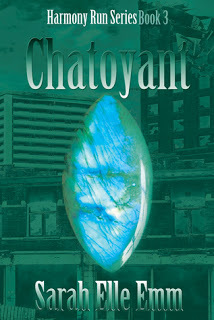 About CHANTOYAT—Harmony Run Series Book 3
About CHANTOYAT—Harmony Run Series Book 3In the wake of an interrogation led by the UZTA's dictator, President Nicks, Rain Hawkins and her friends must deal with the consequences of their defiance as the countdown continues towards the execution of the mixed-zone citizens across the United Zones of The Authority. The Freedom Front faces new challenges as Rain's cousin, Calista, prepares for her impending relocation to the pure zone, and Rain sets out to solve the mystery surrounding her mother's torment while being followed by an officer of the Elizabeth Guard. As she uses her abilities to dodge The Authority and follows the strange clues from her dreams, Rain is determined to persevere, to secure the future she and Jabari have been fighting for, and to earn The Freedom Front's ultimate goal of liberation.
About OPALESCENT—Harmony Run Series Book 2
Still enslaved in a mixed-race zone within the United Zones of
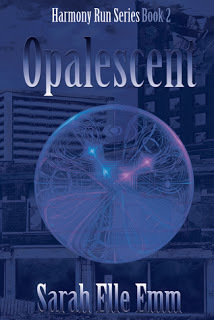 the Authority, Rain Hawkins is part of a secret resistance preparing to take on the tyrannical President Nicks before plans to kill the mixed zones across UZTA are executed. When unsettling dreams and a mysterious voice begin to haunt the dark nights, Rain fears someone more powerful than she has discovered the resistance and their secret abilities. With a known Authority spy on her heels, and her boyfriend, Jabari, suddenly acting strange, Rain doesn't know who to trust and if the voices calling to her are friend or foe. As conditions across all of the zones get worse and the stakes rise, Rain embarks on a quest for answers that will put the people she cares about most in more danger or take them one step closer to the truth and their eventual freedom.
the Authority, Rain Hawkins is part of a secret resistance preparing to take on the tyrannical President Nicks before plans to kill the mixed zones across UZTA are executed. When unsettling dreams and a mysterious voice begin to haunt the dark nights, Rain fears someone more powerful than she has discovered the resistance and their secret abilities. With a known Authority spy on her heels, and her boyfriend, Jabari, suddenly acting strange, Rain doesn't know who to trust and if the voices calling to her are friend or foe. As conditions across all of the zones get worse and the stakes rise, Rain embarks on a quest for answers that will put the people she cares about most in more danger or take them one step closer to the truth and their eventual freedom.About PRISMATIC—Harmony Run Series Book 1
Rare glimpses of birds are the only reminder of the freedoms Rain Hawkins once had. Now segregated into a mixed-race zone within the United Zones of the Authority, under tyrannical rule of President Nicks, Rain is forced to endure the bleak conditions set
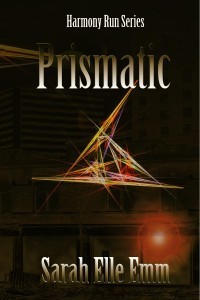 upon her. The possibility of a way out arises when Rain discovers an organized resistance called The Freedom Front, and learns that she, along with many other multi-racial people, has special abilities. Determined to overcome her situation, Rain sets out on a mission with the resistance that will fill her life with wonder, romance, and the undying hope for a better world.
upon her. The possibility of a way out arises when Rain discovers an organized resistance called The Freedom Front, and learns that she, along with many other multi-racial people, has special abilities. Determined to overcome her situation, Rain sets out on a mission with the resistance that will fill her life with wonder, romance, and the undying hope for a better world.Purchase Links
NACREOUSPaperback Kindle
CHANTOYATPaperback Kindle
OPALESCENT Paperback Kindle
PRISMATICPaperback Kindle
Author Links
Website Facebook TwitterAmazon author page
Giveaway: - 1 Winner will get a $10 Amazon GC- 1 Winner will get Signed Copies of all the 4 Books in the Harmony Run Series- 3 Winners will get One Signed Copy of a book of their choice from the Harmony Run Series
Rafflecopter Code:
a Rafflecopter giveaway
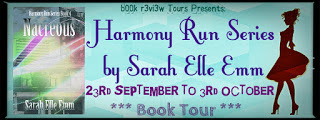
document.write('');
Published on September 23, 2015 19:40
September 14, 2015
WHAT THE EXPERTS SAY: Jaqueline Kyle, Author and Dickens Fan
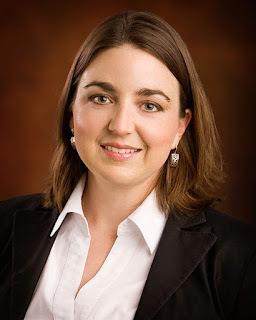 Jaqueliine Kyle, Author and Dickens Fan
Jaqueliine Kyle, Author and Dickens FanEBENEZER SCROOGE: GHOST HUNTERJaqueline Kyle appreciates Charles Dickens so much that she expanded his classic tale into EBENEZER SCROOGE: GHOST HUNTER. She delved into 1840s London language to extend the story consistently with the original A Christmas Carol. She adds supernatural elements, but finds it more “hilarious” than scary.
Kyle’s personal life reads like a true action hero – she stood on top of a nuclear reactor, flew a plane solo on her 16th birthday, ran a marathon, and always bungee-jumps first. She is currently working on a “database of knowledge” for writers and marketers of writers called Wordingly.com.
Don’t miss the opportunity to enter the giveaway at the end of the interview. And she has provided an excerpt for us to enjoy.
Q: So how did the idea occur to you to embellish Mr. Dickens’ Scrooge in EBENEZER SCROOGE: GHOST HUNTER? Did you tire of the annual
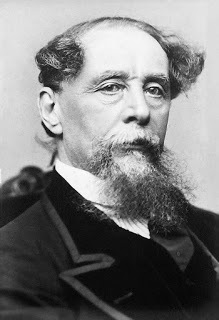 Charles Dickens, Author
Charles Dickens, AuthorA Christmas Carolsurfacing of the story during the holidays and want to improve on it? Are you a fan of Dickens?
Jaqueline Kyle: I love Dickens. I read most of his work outside of a school setting, just for the enjoyment of it. I came up with the idea for EBENEZER SCROOGE: GHOST HUNTER while I was at a Dickens Fair. I saw a woman get startled by the Ghost of Christmas Yet to Come and scream her head off. I thought, “This is still relevant.”
Q: In what genre would you place EBENEZER SCROOGE: GHOST HUNTER? Why?
Jaqueline Kyle: This is a fantastic question because it is a book that defies traditional boundaries. Technically the genre is Mashup or Parody but not every retailer has those categories. It draws heavily from A Christmas Carol, but it’s not a Classic. I added supernatural elements, but it isn’t set in space or some mythical land. There are horrific moments, but I find the book more hilarious than scary. It’s been a real battle trying to find the right category to shelve this book under.
Q: Given that your character Scrooge has already been developed, how did you engage your readers to want to get to know him again in your story? How do you develop a character that has already been created and is well known? Is it easier or more difficult than to develop a character from scratch?
Jaqueline Kyle: Scrooge is incredibly well known, so I kept his personality the same and changed his motivations. That was something that I knew I wanted to do upfront and was fairly easy to accomplish. There are many reasons why someone would be so heartless and removed from the world. In my version, Scrooge has lost his partner Marley in a ghost hunting expedition. He’s withdrawn because he’s lost his only friend and resents the world for being indifferent to the loss.
Q: Did you need to do research for the time period to assure your back story is consistent? Could you draw on the original story to provide the setting and backstory?
Jaqueline Kyle: EBENEZER SCROOGE: GHOST HUNTER draws strongly on A Christmas Carol. It is supposed to sound like Dickens from start to finish. I did have to do a lot of reading and research to ensure I knew what was going on in the language and scenes to keep the new elements consistent in tone. It worked amazingly well. The feedback I’ve received is that it is difficult to spot where Dickens stops and Scrooge the Ghost Hunter takes over.
Q: Do you use humor to tell your story? Suspense? Horror?
Jaqueline Kyle: The language of 1840’s London is so formal, that it is humorous to introduce these supernatural elements. It is such a straight-faced joke that I still giggle reading it. As the story progresses, the novelty of that wears off, so there’s a bit of suspense, a bit of horror. Scrooge has to hit his bottom before he can be redeemed.
Q: Does the concept of hero versus villain apply to EBENEZER SCROOGE: GHOST HUNTER? Is Scrooge a hero or a villain?
Jaqueline Kyle: Another fantastic question! Scrooge believes he is a martyr and a hero. I don’t want to spoil too much, but he does have to face the possibility that he might be the villain. Ultimately EBENEZER SCROOGE: GHOST HUNTER has the same foundation as A Christmas Carol – it is a tale of redemption. So Scrooge is maybe not a traditional villain, but he needs to go on a journey of self-discovery so that he can become the hero.
Q: Did you write EBENEZER SCROOGE: GHOST HUNTER strictly to entertain your readers? Or did you want to deliver a message? Or just have fun?!
Jaqueline Kyle: I originally drafted EBENEZER SCROOGE: GHOST HUNTER for the challenge and entertainment of it. I was going through a personal rough period and the distraction was marvelous. The first draft sat in a dusty file on my computer for two years before I pulled it back out and decided there was something there for readers, too.
Q: How important is credibility or believability to your story? If not, what enables the reader to put aside a sense of reality? What will pull us into the story and make us care what happens?
Jaqueline Kyle: I think readers start this book trying to spot where A Christmas Carol ends and the new story begins. What pulls the reader in is the new mystery of how Marley died, why Scrooge despises Bob Cratchit (one of the most likeable characters of all time), and the life and death stakes when you are a ghost hunter about to be visited by three ghosts.
Q: What’s next?
Jaqueline Kyle: I spent the last few months creating a database of knowledge for aspiring writers, self-publishers, and book marketers. It’s called Wordingly.com. I expect that a lot of my time in the next few months will be used there as well, to add more wisdom to collection.
Q: Tell us something about Jaqueline Kyle. You seem to be a thrill-seeker! What do you like to do these days when you’re not writing?
Jaqueline Kyle: I tend to put a stamp in my passport to countries I’ve never been to before. While I’m there I eat food I would never other wise consider, gleefully throw money away in tourist traps, and engage in some death defying antic to scare my mother with in the retelling.
About Jacqueline Kyle
Jaqueline Kyle once stood on top of an active nuclear reactor. It glowed. She dove the Great Barrier Reef and the fish swarmed to check HER out. On her 16th birthday she flew a plane solo – just to enjoy the view. She once ran a marathon - because it was faster than walking. When she bungee jumps, she always goes first, so her friends can jump off the bridge after her. Jaqueline Kyle is not the most interesting man in the world – because she’s a woman.
About Charles Dickens!
Charles Dickens lived from 1812 to 1870 and originally wrote A Christmas Carol as a political pamphlet to bring attention to the plight of childhood ignorance and the cycle of poverty. Also, Dickens loved coffee so much that they still put his picture on coffee mugs. True Fact.
About EBENEZER SCROOGE: GHOST HUNTER
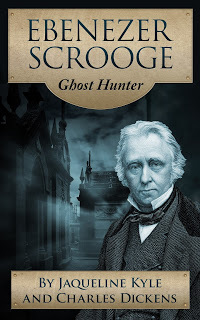 EBENEZER SCROOGE: GHOST HUNTER expands the original text of Charles Dickens’ classic with all-new scenes of malicious ghosts, soul-devouring wraiths, deadly doppelgangers and other terrors from the netherworld. Our story opens seven years after Marley’s violent death. Ebenezer Scrooge has given up ghost hunting and embraced an inevitable slow death by alcohol poisoning. When the spectre of his deceased partner appears to him on Christmas Eve, Scrooge learns that he must face three Ghosts – one who will try to help him, one who will try to harm him and one that cannot be killed.
EBENEZER SCROOGE: GHOST HUNTER expands the original text of Charles Dickens’ classic with all-new scenes of malicious ghosts, soul-devouring wraiths, deadly doppelgangers and other terrors from the netherworld. Our story opens seven years after Marley’s violent death. Ebenezer Scrooge has given up ghost hunting and embraced an inevitable slow death by alcohol poisoning. When the spectre of his deceased partner appears to him on Christmas Eve, Scrooge learns that he must face three Ghosts – one who will try to help him, one who will try to harm him and one that cannot be killed. In a story that spans a lifetime of torment, Scrooge must face the demons of his past and his failures in the present in order to prevent the horror that is his future. The stakes for Scrooge’s soul have never been higher than in this wicked retelling of the classic, A Christmas Carol.
Excerpt
The key, being primarily iron and ornamented with scrolled silver, fit the lock of the store room around back of the counting house. It was to here that Scrooge retired, shoving the key into the equally ornamented lock and turning it home. He did not light a lamp immediately but stood much like a ghoul himself in the gloom of the store room.
There in the shadows lay the real tools of Scrooge and Marley’s trade. Iron implements inlaid with silver runes, lanterns attached to mirrors designed to cast the brightest possible light, black powders that could ignite in an instant, herbs and salts to smudge and disperse the spirits. And darker still, vials of blood to draw the energies in and trap the worst of the ghouls that walked the earth.
“With a sigh of a man who had done the same for years gone by, Scrooge moved a few ancient logs from a dusty woodpile and onto the small hearth. He threw a handful of black powder on the pyre and struck it alight with a practiced swipe at the flint stone. The flames lit the room with a bright, hot heat and then died down to a small flicker as the mummified logs struggled to catch. Scrooge knew he could have easily struck the logs alight without the powder, but the resulting smell of burning sulfur suited his melancholy mood.
Pulling a small flask from his deep pockets, Scrooge set about his task. As he had done every year on the anniversary of Marley’s death, Scrooge inspected the store room. With a practiced hand, he examined the protection wards on the doors and windows, feeling for weaknesses and looking for signs of molestation. Satisfied that the room was undisturbed, he drew up a hard stool, much like it’s twin in the counting house, and taking another long swig from his flask, proceeded to pull every weapon, tool and instrument of his defunct craft to his lap where he inspected, polished and cared for each one in turn. Not for the first time, Scrooge wondered about his old trade, ghoul hunting, and how the counting house had started as a front for this passion. With the passage of time and one death too many, the two professions had switched roles with the counting house taking prominence and ghoul hunting being regulated to a hobby mostly forgotten. Scrooge hadn’t taken a case since Marley’s demise.
Once Scrooge had satisfied himself as to the quality of the tools of his former trade, with the flames guttering in the hearth, he pulled out an old fob watch of his former partner. “For you, you sorry bastard,” Scrooge toasted before tilting back his flask and finding nothing but air, as he had drank the contents during the “dischargement of his annual duties. He shrugged and stood, having to check his balance against the dusty doorjamb and leaving the final flickers of fire to burn themselves out, locked up the store room and stumbled out into the cold and foggy night.
Links
Giveaway
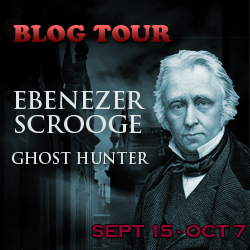 Purchase LinksAmazon iBooksKoboB and NSmashwords
Purchase LinksAmazon iBooksKoboB and NSmashwordsAuthor Links GoodreadsVideo Book Trailer
Published on September 14, 2015 19:06
September 5, 2015
WHAT THE EXPERTS SAY: Paul E. Horsman, Light Fantasy Adventure Author
 Paul E. Horsman, Author
Paul E. Horsman, AuthorThe Shadow of Revenant
RHIDAUNA and ZIHAENInternational Dutch author Paul E. Horsman writes light fantasy adventure stories for teens 15+ years old. He creates characters of “a diverse cast and both female and male heroes” and claims his villains are all “disliked heartily.” He believes that the key word to attract teenage readers is ‘adventure.’ His The Shadow of the Revenaunt includes two books: RHIDAUNA (Book 1) and ZIHAEN (Book 2).
Although Dutch, Horsmsan prefers to write in English. He lives in Roosendaal, a town on the Dutch-Belgian border. A full-time writer, he is currently working on several new books and also plans to soon republish the third Revenaunt-book, Ordelanden. When he’s not writing, he enjoys playing computer games.
Q: Why do you write in the fantasy genre? What traits do you believe are most important for this genre? Do you believe fantasy is a superior genre to reach teenage readers?
Paul E. Horsman: Fantasy is for me the medium to express myself best in. I’ve always been interested in history, mythology, folklore and foreign lands, and here I can mix them into new patterns. I am not of the Tolkien school (though I love the books very much), and I am certainly not a dark and gritty writer. I have been told my stories have a distinct RPG feel to them. I have played many computer games, from Baldur’s Gate up to World of Warcraft, so I suppose that style stuck on me. I like to describe them as light fantasy adventure.
I think it is important to be both original and recognizable, especially for teenagers. Now the first two Revenaunt books were also the first two I wrote, so they are more in the traditional line than my later novels like ‘Lioness of Kell’. Still, like all my books, they have a diverse cast and both female and male heroes.
Q: The Shadow of the Revenaunt includes two books: RHIDAUNA and ZIHAEN. Do any of these names signify anything? If so, what? Or did you just want to create interesting-sounding names?
Paul E. Horsman: When I thought of titles for my book series, I wanted something short. The subtitle The Shadow of the Revenaunt is long enough. I settled for the names of the countries most important in the story. For Book 1, that is Rhidauna, the homeland of my hero Ghyll and his foster brother Olle. Rhidauna is a kingdom comparable to the Dutch/German lands and the Yanthe River where the story begins is a bigger version of the Rhine, with mountains and castles.
For Book 2, I chose Zihaen, the scene of the story finale. Zihaen is a steppe land; endless grass intersected by rivers, populated by nomads. Of the mighty civilization that once flourished here, only ruins are left.
Q: In stories of castles, sorcerers, monstrous firebirds and black-clad golems, how important is ‘credibility?’ How do you draw the teenage reader into an unreal world? Are there rules that need to be followed? What will lose their interest?
Paul E. Horsman: To my mind, credibility is always important, and certainly for fantasy. Everything I imagine must have a logical explanation. This doesn’t need to be scientifically correct, but it must be both believable and consistent.
I think the characters are the main anchor. When the reader can identify with them and their actions, the rest, like magic and monsters, will be accepted as a matter of course.
The key word of interest to a teenager would be ‘adventure’. To keep them reading, my books are very fast-paced, and there is a lot of action in them. Their Dutch rating is for ages 15+.
Q: How did you envision your “world building” for The Shadow of the Revenaunt? Did you create the world first and then follow with your characters?
Paul E. Horsman: With ‘Revenaunt’ the world developed as I wrote. I do a lot of research while writing, and I note down everything to stay consistent. In that I am a typical pantser (writing by the seat of my pants), instead of a plotter.
Q: What makes your readers engage with your characters? Do they look for heroes? Do they favor villains? What makes a good villain? Are their good “creatures” and bad “creatures?”
Paul E. Horsman: I have a lot of characters in my stories. Now I have noticed readers don’t all relate with the same heroes. Some like Ghyll best, others run away with Olle, his foster brother, or with the young mage Bo. Many people like my female characters (Uwella in Book 1, Kerianna in Book 2).
My villains are disliked heartily, but then they are really nasty types. The goals of their organization are very destructive, and my villains are all of the egoistical, conscienceless kind – by definition are the heroes and villains of Revenaunt good and bad. Now my heroes are not shiningly perfect; they have flaws, uncertainties and shortcomings like everyone else. The villains are ruthless, overconfident and arrogant, and not meant to be likeable.
Q: How helpful is humor to develop your characters or story? Can you make jokes in a fantasy world?
Paul E. Horsman: Humor is a necessary ingredient (unless you are writing a certain famous dark fantasy series of course!). There is a lot of wordplay and lighthearted banter in my dialogues.
Q: Do you write your fantasy stories solely to entertain and absorb teenagers in books? Or do you also try to deliver a message or two?
Paul E. Horsman: The main thing all my books have in common, is equality. I have male and female heroes, gay heroes and heroes of color. It is not meant as a message per se, but it is a basic part of my worlds.
Q: Having lived in the Netherlands for a year, I am well aware of the language ability of the Dutch. However, I’m curious if as a Dutch-born author you find it difficult to write stories in English?
Paul E. Horsman: Actually, I prefer writing in English to Dutch. The difficulty is not so much in the language, as in the cultural differences, especially when I am writing about POC, gender and cultures. With readers in other countries there sometimes are differences in historical backgrounds that make it easier to unintentionally offend. I have several beta readers in both US and UK, but even so the risk remains.
Q: What’s next?
Paul E. Horsman: The third Revenaunt-book, Ordelanden, will be republished soon. It was completely rewritten, and extended from 75.000 to 111.000 words, with more story, more characters and a lot more adventure.
I am working on several new titles. Grimoires, a parallel story to Ordelanden, telling the adventures of the mage Bo Lusindral and his hunt for the Revenaunt’s spell books. Also Broomrider, a standalone sequel to Lioness of Kelltwenty-five years later, when the earlier heroes’ children fight a powerful undead mage.
Q: Tell us about Paul E. Horsman. What do you like to do when you’re not writing?
Paul E. Horsman: Well, I’m the least interesting part of all this... I’ve been in education until mid-2012 – working with immigrants and refugees, teaching them Dutch and preparing them for naturalization. My job became privatized, what made me too expensive. I have been out of work since then. I’m single and three years away from retirement. Now I spend my days as a full-time writer. My health isn’t optimal, so I don’t go out much anymore and when not writing, or researching, I am playing computer games.
About Paul E. Horsman
Paul E. Horsman (1952) is a Dutch and International Fantasy Author. Born in the sleepy garden village of Bussum, The Netherlands, he now lives in Roosendaal, a town on the Dutch-Belgian border.
He has been a soldier, a salesman, a scoutmaster and from 1995 till his school closed in 2012 a teacher of Dutch as a Second Language and Integration to refugees from all over the globe.
Being unemployed and economically overage, yet still some years away from retirement, he is a full-time writer of epic light fantasy adventures. His books are both published in the Netherlands, and internationally.
About RHIDAUNA
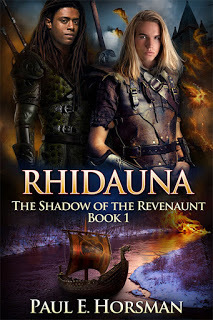 The night before his Coming-of-Age, Ghyll and his two friends escape their castle on a clandestine boar hunt that will forever change their lives. The hunt proves a disaster, and with one of them badly wounded, they return just in time to see their island castle destroyed by macabre warriors from a dragon boat, and by flocks of fire-breathing birds. Ghyll's eighteenth birthday turns into a nightmare as they flee into the night.
The night before his Coming-of-Age, Ghyll and his two friends escape their castle on a clandestine boar hunt that will forever change their lives. The hunt proves a disaster, and with one of them badly wounded, they return just in time to see their island castle destroyed by macabre warriors from a dragon boat, and by flocks of fire-breathing birds. Ghyll's eighteenth birthday turns into a nightmare as they flee into the night.Now begins an epic journey to find out who is trying to kill them – and most importantly, why?Fortunately, they can count on the help of new friends, including a sometimes overly enthusiastic fire mage, an inexperienced paladin and a young beastmistress who is also a ferocious mountain lioness. It soon becomes clear that not one but several sorcerers want to kill them. Are those blackrobes really followers of a terrible, long-forgotten organization?
About ZIHAEN
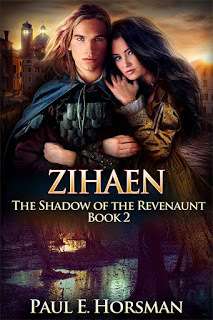 And whose cold hand reaches across the boundaries of space and time to crush weakened Rhidauna?How did his parents and brothers die? Where their deaths really accidents, or were they killed? These questions young Ghyll Hardingraud must answer before he can ascend Rhidauna's throne.
And whose cold hand reaches across the boundaries of space and time to crush weakened Rhidauna?How did his parents and brothers die? Where their deaths really accidents, or were they killed? These questions young Ghyll Hardingraud must answer before he can ascend Rhidauna's throne.Ghyll’s search for the truth leads him and his Companions on a journey back to the past as he slowly unravels a dark conspiracy.
Once crowned, the young King Ghyll still has to finish the mission his dead uncle imposed on him. The journey takes him and his trusted friends through inhospitable lands and dangerous swamps to the endless steppes of Zihaen, looking for the Voice from the West. He discovers he isn't the only one. His vindictive enemy pursues him, aided by undead forces.
Links
Purchase Links
Amazon
Barnes and Noble
Kobo
Smashwords
iTunes
Author Links
Website Twitter @graylorneFacebook
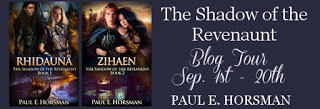
Published on September 05, 2015 19:33
September 1, 2015
WHAT THE EXPERTS SAY: Jade Whitfield, Author
 Jade Whitfield, Author
Jade Whitfield, AuthorFOREVER LOVEJade Whitfield has written FOREVER LOVE that “combines romance and drama” for teens over 17. Reviewers like its “heart moving” story and appreciate its uniqueness in that it covers “a somewhat taboo nature.” Whitfield wrote it primarily to entertain but she also hopes that people can relate to the situation and learn from it.
Whitfield currently enjoys spending time with her son and loves to read. She is working on the next book Forever Together.
Q: Your new book FOREVER LOVE has been described by reviewers as a “heart moving teen love story” that’s “unique” as well as both “sweet” and “hot.” Would you place it in the “romance” genre or any other? What do you consider to be the key characteristics of this genre? Why is FOREVER LOVE “unique?”
Jade Whitfield: I would definitely place FOREVER LOVE in the romance genre. I think the key characteristics to this particular genre are an emotional and gripping story, and of course a 'Happily Ever After'.
Forever Love is 'unique' due to the heartbreaking undertone. Liv, the main female character is harbouring a terrible secret that until revealed keeps her from becoming happy. Noah's job is to knock down her walls and force her to feel.
Q: Reviewers find your characters to be “relatable.” How do you help readers to care about them, especially Liv, your protagonist?
Jade Whitfield: Liv is a normal teenage girl in terms of she just wants to have fun. She's not looking for love and she is definitely no shrinking violet. We live in a generation now where women aren't held back by their gender and whereas before they would be judged for acting promiscuous or loud or fiery, it’s a much more even playing field now. Liv is feisty and sassy but also broken inside. She sticks her walls up to protect herself and that is key. Liv reacts to a certain situation as many people would but it surprisingly is rarely depicted in books.
Q: How do you connect with the “psyche” of a teenager? Are you primarily targeting teenage readers or is FOREVER LOVE for all ages?
Jade Whitfield: Well I'm only 22 so I wasn’t a teenager that long ago. I think teenagers are a lot more mature minded now as well. They’re much more aware of the world we live in. FOREVER LOVE, in my opinion, is probably for the ages of seventeen and above. The language is quite colorful since they do have quite the potty mouths.
Q: Does the concept of “heroes versus villains” play a role in your story? Are there villains?
Jade Whitfield: Yes, but that’s not primary to the story, which is also unlike other books. There are villains who do get their comeuppances throughout the book but the main villain is Liv herself. Those who have read it will know exactly what I mean.
Q: How important is humor to telling your story? Does it help readers engage with your characters?
Jade Whitfield: Very. I think in FOREVER LOVE there are moments where your heart is breaking and you can’t help balling your eyes out so the humour really gives some relief after some of the heavier scenes. Also, I think having some comedic characters is just perfect; they’re usually the ones you fall in love with.
Q: How supportive is setting to telling your story, i.e., does moving from the city of Atlanta to a small town help flesh out the drama?
Jade Whitfield: A little. There are settings in the book that are more important than others in the book. There are ones that hold a certain significance. Also what the settings represent is important. For instance Atlanta holds a lot of angst and sadness whereas Franklin signifies renewal and new beginnings.
Q: Did you write FOREVER LOVE strictly to entertain readers in a good story? Or did you want to deliver a message? Or provide instruction or insight?
Jade Whitfield: I hope that it entertains people! There isn’t so much a message, more of a situation that some people can relate to and hopefully learn from. I think there are some people who absolutely will be able to relate to Liv’s journey and Liv’s past and hopefully take some of the lessons that she has had to learn the hard way and make good use of them. I think that reading about a situation a character is going through that is relatable puts things into perspective.
Q: Why did you choose to write FOREVER LOVE in first person? Did you find it a useful tool?
Jade Whitfield: Yes it’s just how I prefer to write. I think it gives a unique insight into the characters mindsets and how they’re feeling. I think you get more of a feel of their personalities.
Q: What’s next? I notice that FOREVER LOVE is the first of a series. Are you working on the next Liv romance?
Jade Whitfield: Well, I was originally going to start a new series called THE PRINCIPESSA but due to the success of FOREVER LOVE I have pushed that back and instead brought the release of FOREVER TOGETHER forward so that it will be released before the year is out. FOREVER LOVE was originally going to be a standalone novel but it has grown so much and will now be a five part series. Though Liv and Noah will feature in the next book, their story is over for now. They're getting their happily ever after. The next book is about Brady and Cindy who were both characters in FOREVER LOVE. From feedback from readers, Brady is definitely a fan favourite and the next book will definitely have plenty of comedy and also a little heartbreak in it as well.
Q: Tell us about Jade Whitfield? What do you like to do when you’re not writing?
Jade Whitfield: Probably reading. I have a young son so he takes most of my time up and I’m a HUGE book worm. Reading was my first passion and that has eventually led to writing. I’m just a normal girl from the West Midlands really who just happens to write stories and stick them on Amazon. Right now, apart from my son and the usual in life, marketing FOREVER LOVE and writing FOREVER TOGETHER are taking up the bulk of my time.
About Jade Whitfield
As a passionate reader and writer, Jade Whitfield loves nothing more than a good cup of coffee and a sweet romance. A fan of 'Happily Ever After', she believes that everyone should find their own forever love and is committed to telling stories to inspire that.
About FOREVER LOVE
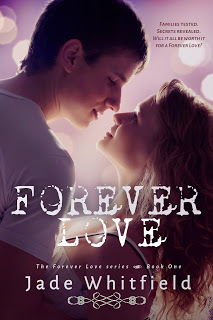 Beautiful and sassy, Liv Preston constantly has guys falling at her feet. Guys break you though, they use you and spit you out, leaving you a broken mess on the floor. No, Liv is much too smart to let that happen, instead choosing to go down the route of the ultimate female player.
Beautiful and sassy, Liv Preston constantly has guys falling at her feet. Guys break you though, they use you and spit you out, leaving you a broken mess on the floor. No, Liv is much too smart to let that happen, instead choosing to go down the route of the ultimate female player. Handsome and arrogant, Noah Travers is the ultimate catch. The star quarterback with a Greek God physique, he's too young and there are way too many girls out there for him to commit to one relationship.
When Liv moves from Atlanta to the tiny town of Franklin to live with her Dad, she has no idea that her life is about to change. The second Noah claps eyes on his new step-sister, its love at first sight. Now all the reformed former player has to do is convince his beautiful, yet broken new step-sister that he's the guy for her. All Liv has to do, is trust her hot as hell new step-brother not to break her.
Can their relationship survive secrets that have been hidden for years though? Can it survive the enemies that seem to lurk around every corner?
Families will be tested, secrets revealed. Will it all be worth it for FOREVER LOVE?
LinksAmazonFacebookGoodreads
Published on September 01, 2015 19:02
August 26, 2015
CHECK IT OUT: Sarah Elle Emm, New Release NACREOUS
Sarah Elle Emm has just released NACREOUS, the fourth book in her young-adult, dystopian Harmony Run Series.
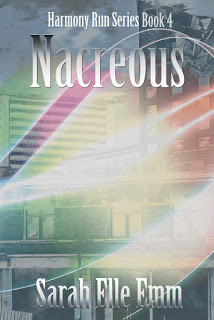 About NACREOUS
About NACREOUS After two members of The Freedom Front are arrested and interrogated by the UZTA’s tyrannical President Nicks, Rain Hawkins and her friends face the alarming reality that their plans to liberate the mixed zones across the United Zones of The Authority might not come to fruition.
While the resistance movement is growing outside the walls of the zones, the president’s forces are strengthening and putting citizens everywhere in more peril than ever. When Rain receives warnings that her cousin, Calista, has agreed to support plans to kill the mixed zones, and that her life could be on the line at the upcoming pure zone initiation ceremony, she must decide where her loyalties lie and if all of her allies can be trusted.
As The Freedom Front use their abilities to unravel the mystery of the ceremony, The Authority captures some of their friends, forcing TFF to either go into hiding, or plan a rescue mission that could jeopardize everything they’ve been fighting for.
About Sarah Elle Emm
 Sarah Elle Emm is the author of the
Harmony Run Series
, a young-adult fantasy and dystopian series, released in May 2012 by Winter Goose Publishing. (PRISMATIC, May 2012, OPALESCENT, February 2013, CHATOYANT, September 2014, NACREOUS, August 2015) Her debut fiction novel, MARRYING MISSY, was published by Bird Brain Publishing in October 2011. Sarah is a graduate of The University of Evansville, she has lived and worked in Mexico, Germany, England, the U.S. Virgin Islands, and has traveled extensively beyond. Sarah lives in Naples, Florida with her family. When she’s not walking the plank of her daughters’ imaginary pirate ship or snapping photos of Southwest Florida scenery, she is writing.
Sarah Elle Emm is the author of the
Harmony Run Series
, a young-adult fantasy and dystopian series, released in May 2012 by Winter Goose Publishing. (PRISMATIC, May 2012, OPALESCENT, February 2013, CHATOYANT, September 2014, NACREOUS, August 2015) Her debut fiction novel, MARRYING MISSY, was published by Bird Brain Publishing in October 2011. Sarah is a graduate of The University of Evansville, she has lived and worked in Mexico, Germany, England, the U.S. Virgin Islands, and has traveled extensively beyond. Sarah lives in Naples, Florida with her family. When she’s not walking the plank of her daughters’ imaginary pirate ship or snapping photos of Southwest Florida scenery, she is writing.Fun Facts about Sarah Elle Emm by the author
Writing Playlist
So…Music. Some authors swear by it. They have their playlist set in the background while they pen their latest manuscript.
Me? Not exactly. Music is very important to me. I believe in dance parties, and by dance parties I mean cranking up my I-pod to the music fitting my mood, be this salsa, classic rock, blues, country, classical, whatever, and dancing alone in my room or kitchen. (Yes, I said classical and country in the same list).
My kids may or may not be in attendance. They like to watch and laugh. Sometimes, they join in. But as far as my writing process goes, the music is sort of my warm up. So I might turn on some music that fits my mood for parts of the story and listen to it in my car or at my desk before I write, but not while I am actually writing. I need it to be quiet in the room, so I can tell the story…(Ahem, hear what my characters are trying to tell me). ;)
While I wrote NACREOUS, and the other books in the Harmony Run Series, my favorite music warm-up to set the mood was Lorde. Specifically, the songs Team and A World Alone. In fact, if any of the books from my series could be made for film, I would beg producers to include one of those songs in the movies.
My Writing Process
I can’t sit down and force myself to write every day because it begins to feel too mechanical, but I am definitely one of those people who thinks about writing, story ideas, characters, scenarios all of the time, awake or asleep.
I love using my dreams in my writing and have written a few of them into scenes in the Harmony Run Series. Back in college, the good ol’ stone ages, I had one of the most terrifying dreams of my life about a man with a triangular-shaped eye chasing me down a corridor, one door after the other, with this woman’s voice echoing all around us, telling him to kill me. When I got to the end of the corridor, I opened the last door, and he was standing there facing me. I woke up sobbing.
About a year later, a psychology professor at my university asked some of us to share dreams with him so he could demonstrate dream analysis. I bravely raised my hand, (this was huge for me, since I am a very shy in person), and shared my dream in vivid detail. After I finished talking, the entire class got eerily quiet and the professor told me I was dealing with issues beyond his realm of help, and went on to the next student’s dream. That student shared a dream about not being able to make a goal in a soccer match, and the professor dissected his dream in depth for fifteen minutes.
Years later, I incorporated that dream, adding on some twists and turns of course, into book one from the Harmony Run Series, PRISMATIC.
I also come up with ideas when I’m looking out of the kitchen window, when I’m walking, driving, cooking, gardening, taking my kids to martial arts, helping with their homework, basically, every waking moment. I take heaps of notes. I jot notes down for days. And when I’m ready, I sit down and type everything I can. I woke up the other night, and grabbed the notebook and pen beside my bed and wrote down an idea for another story. So my writing process is sort of a twenty-four hour thing.
Oh, and probably the most important part of the process…How could I forget? My dog, Shorty, has to harass me to sit in my lap throughout the day. She eventually gives up and sleeps at my feenearby. She spares me the occasional glance or sighs every so often when I talk too much. Yes, I like to talk aloud to myself more often than not. If that dog could talk…Well, thankfully that’s not an issue. Here’s a photo of my writing pal…
Purchase Links
PaperbackKindle
Author Links
Website Facebook Twitter: https://twitter.com/sarahelleemm Amazon author page
document.write('');
Published on August 26, 2015 00:10

